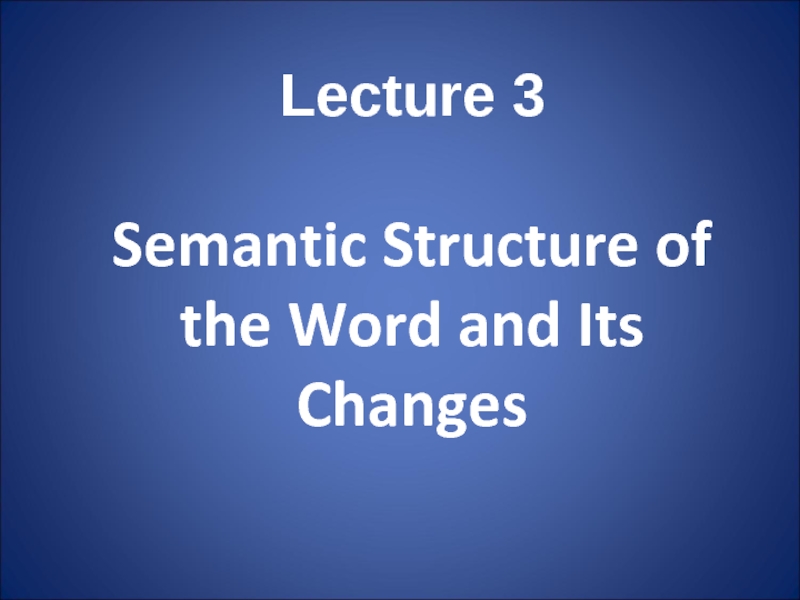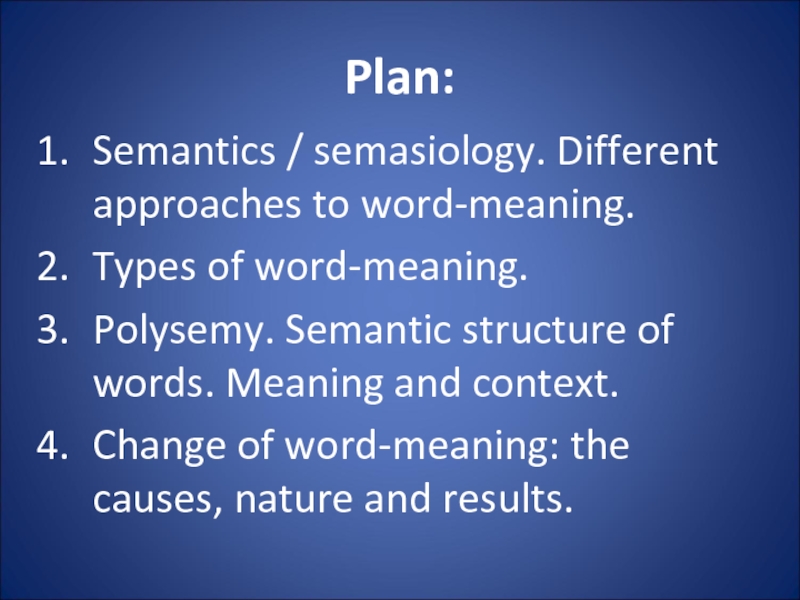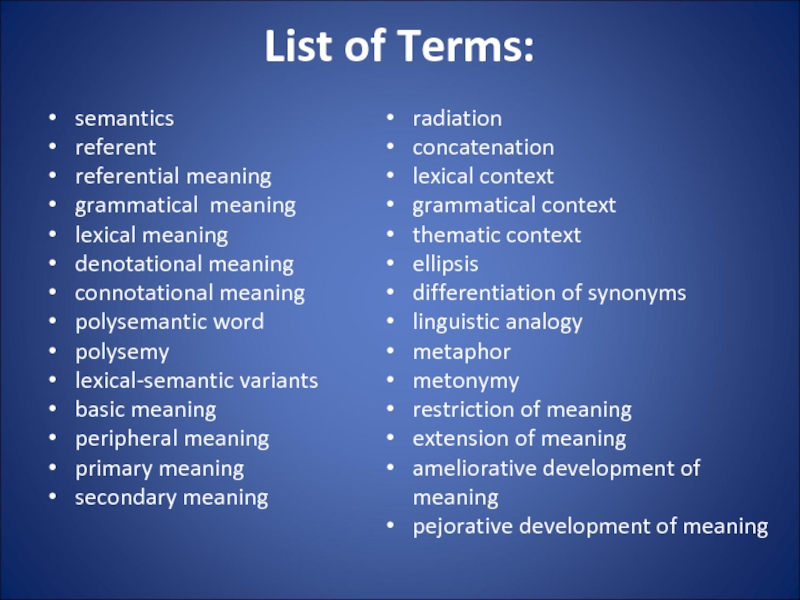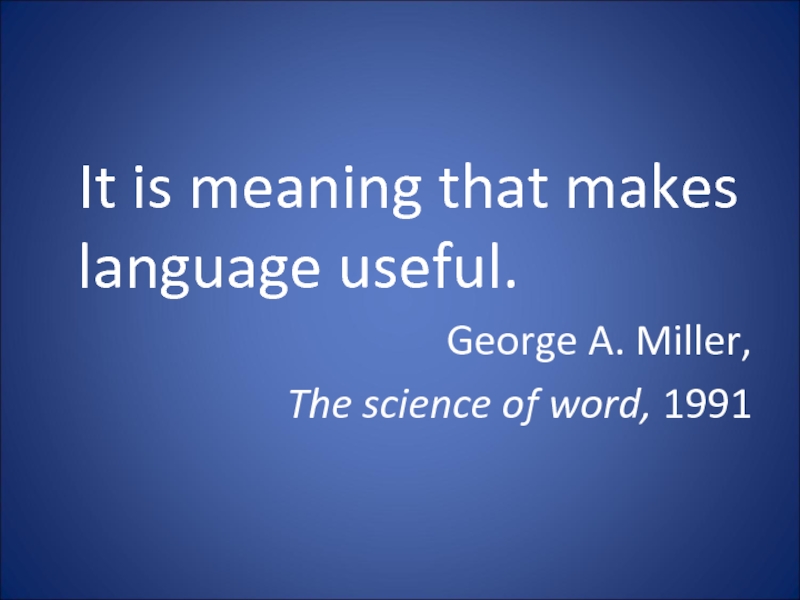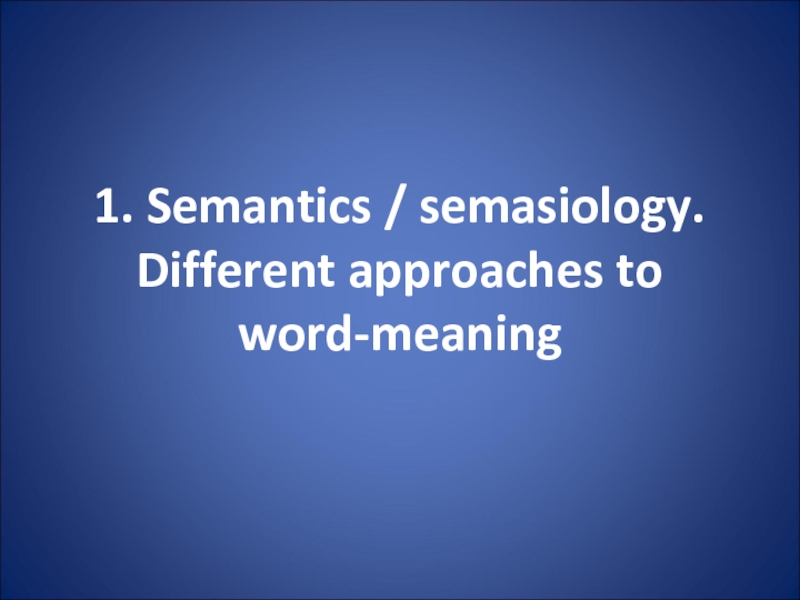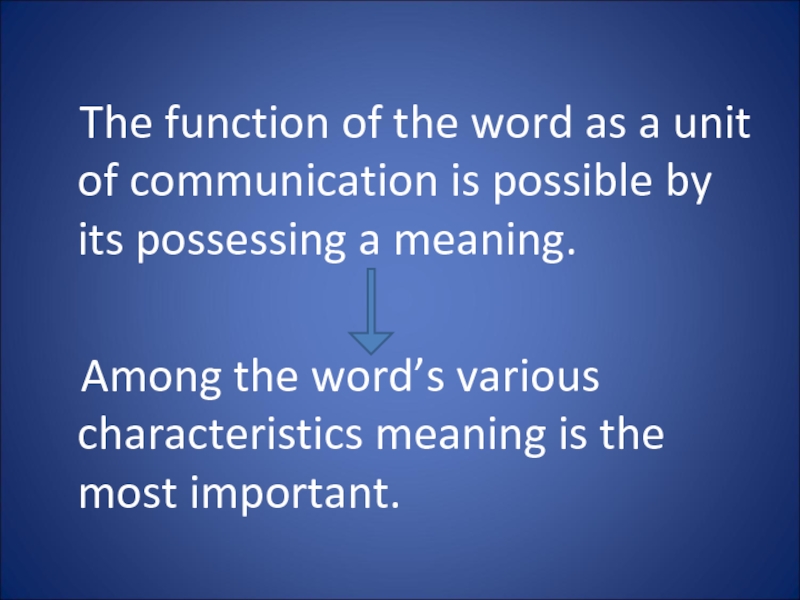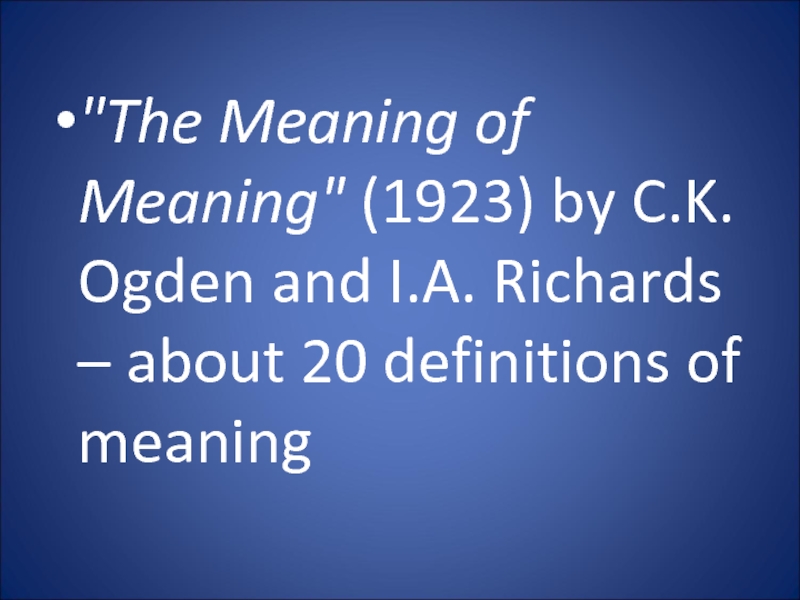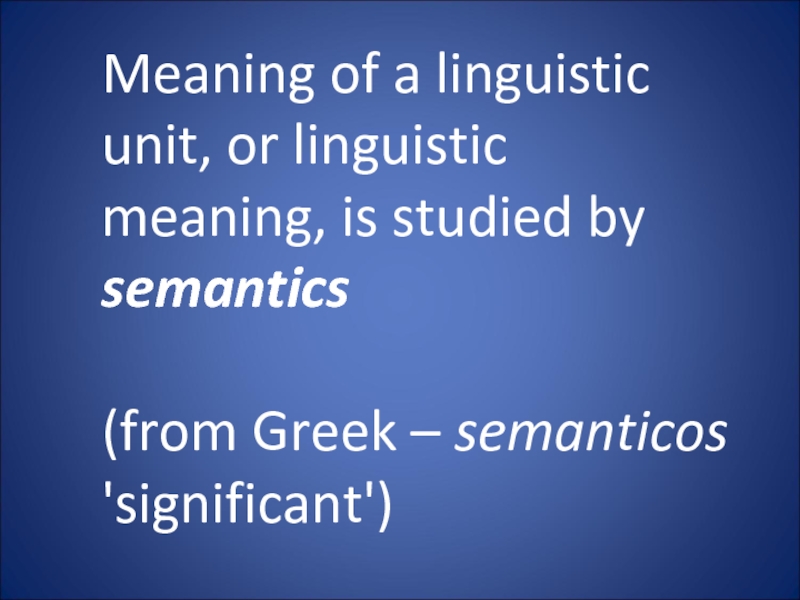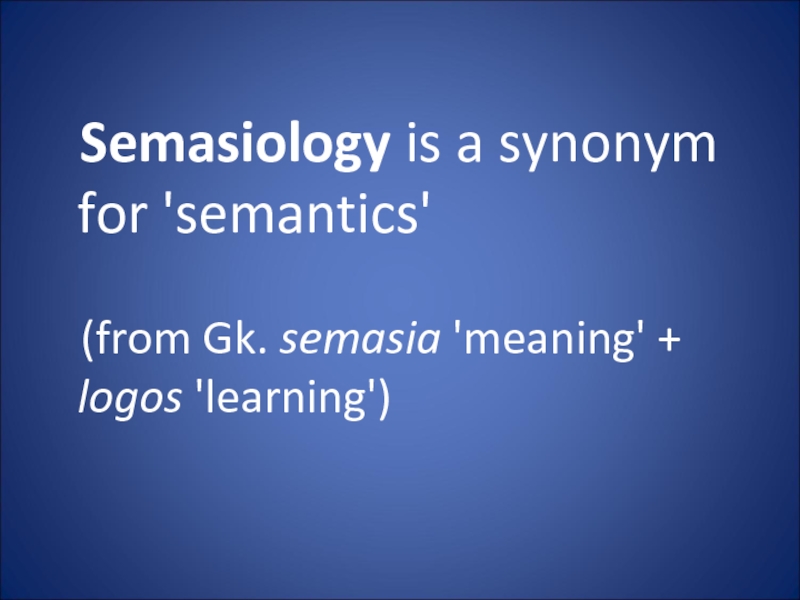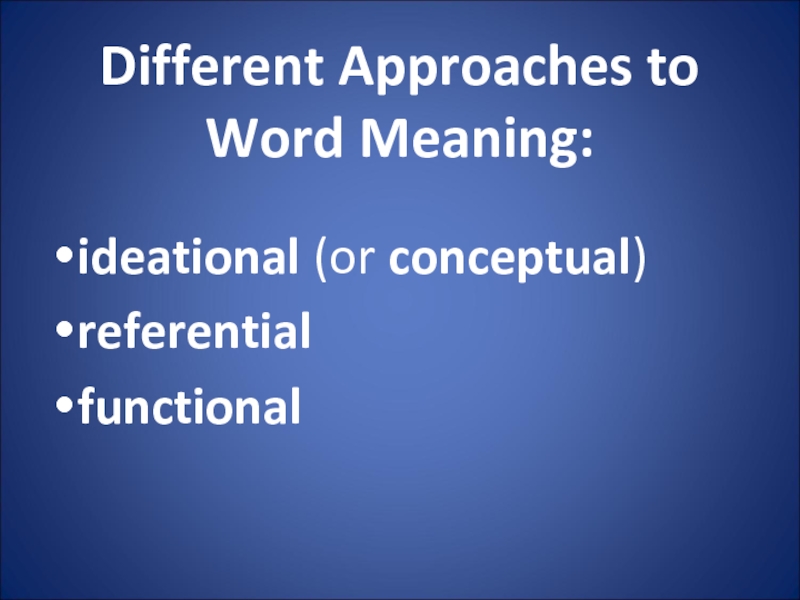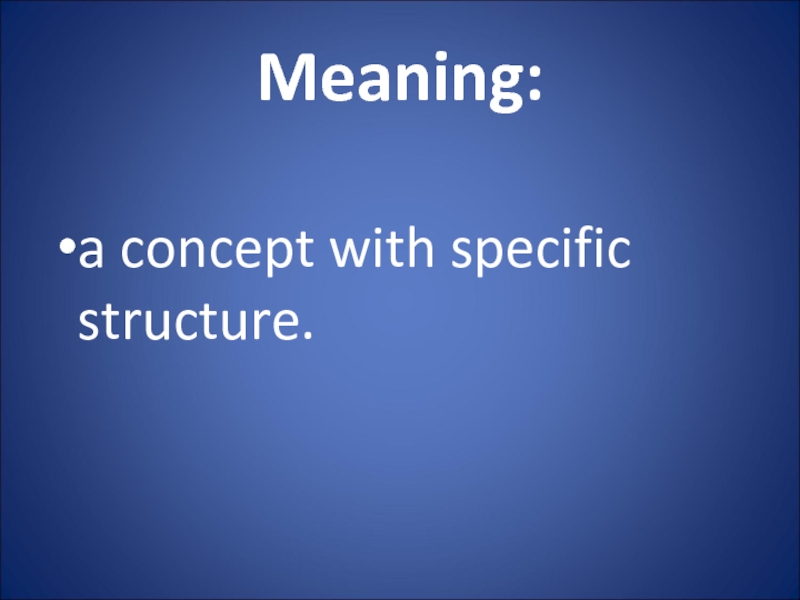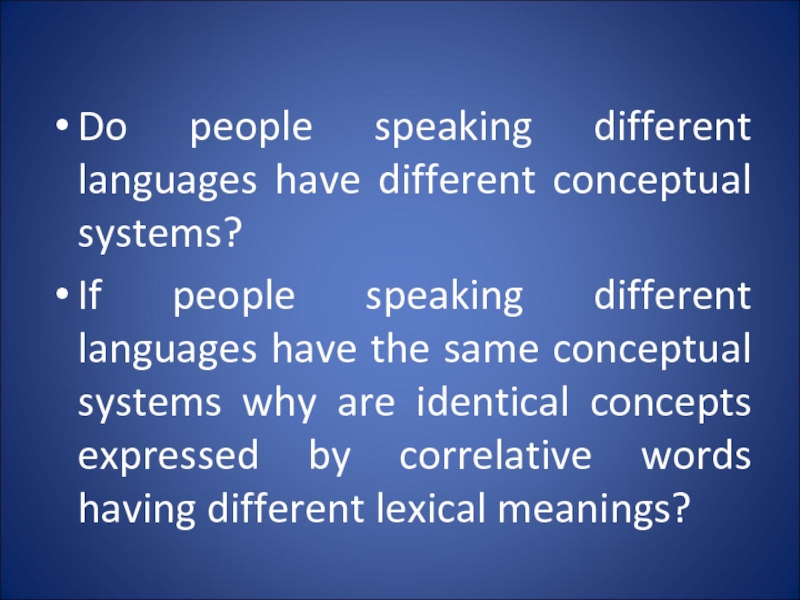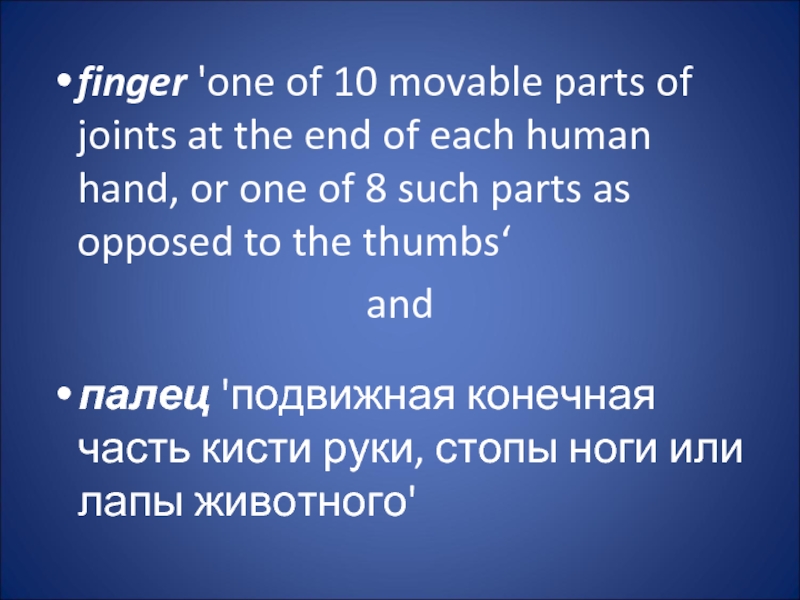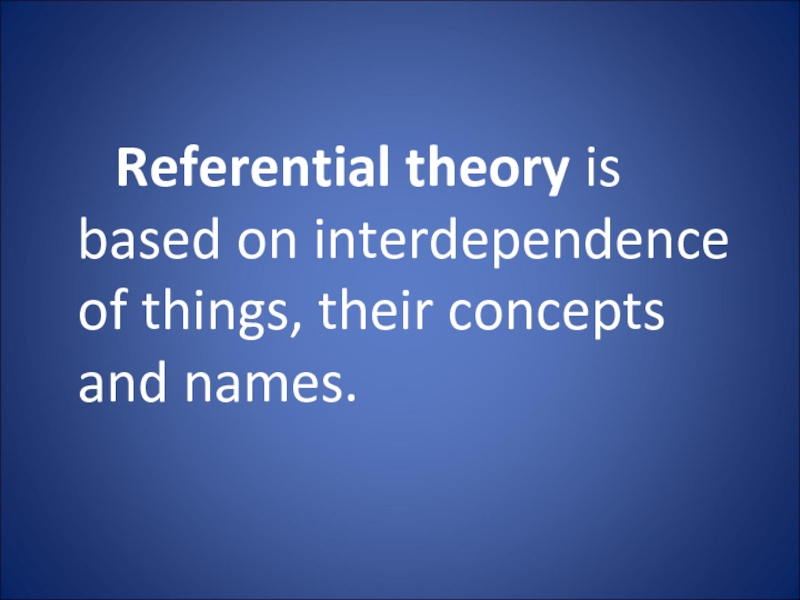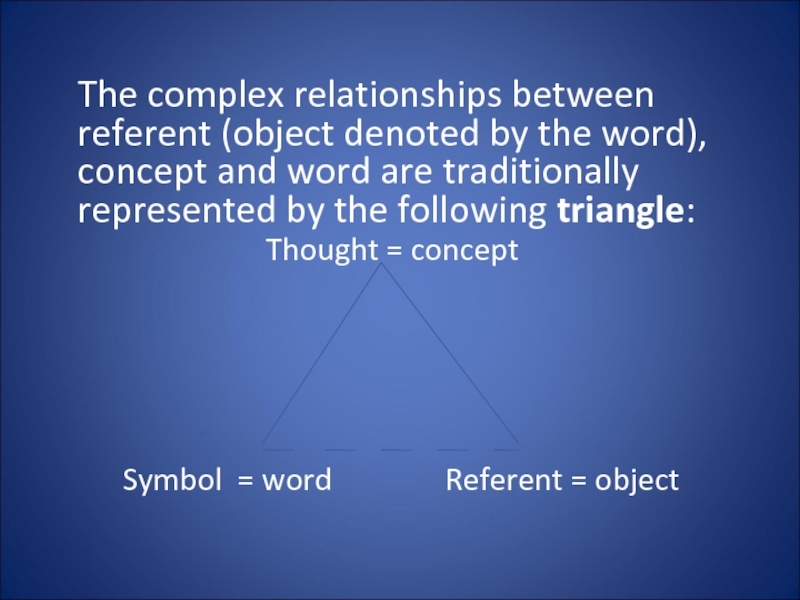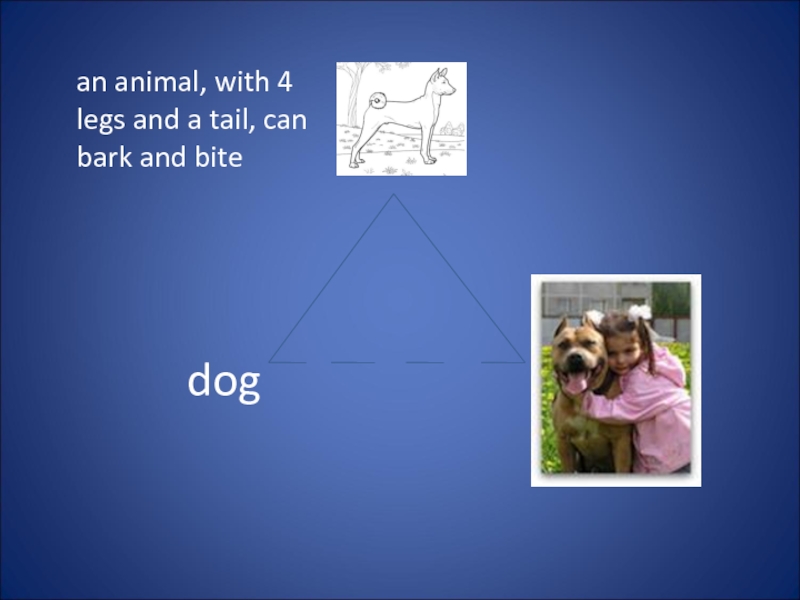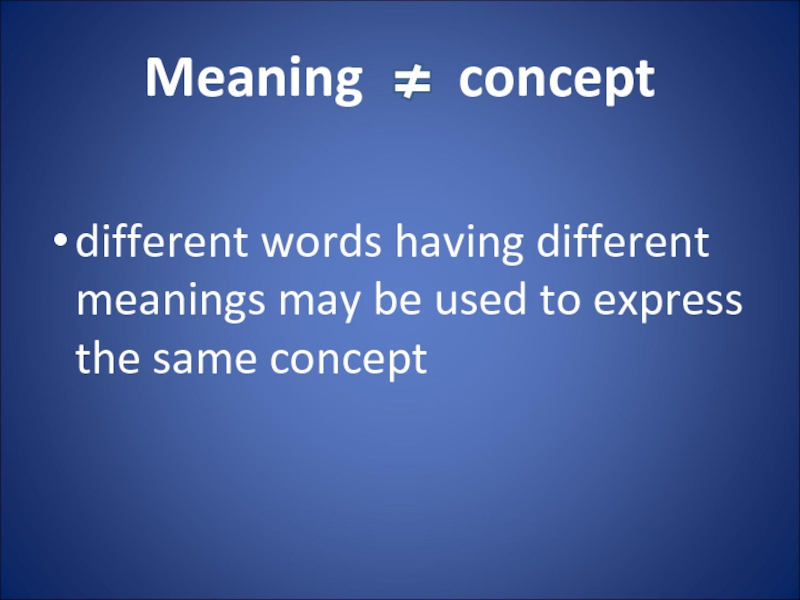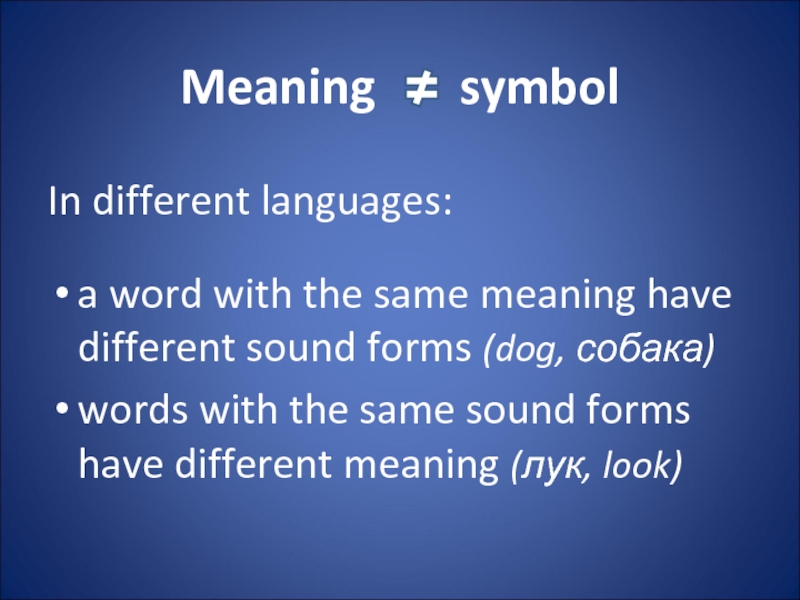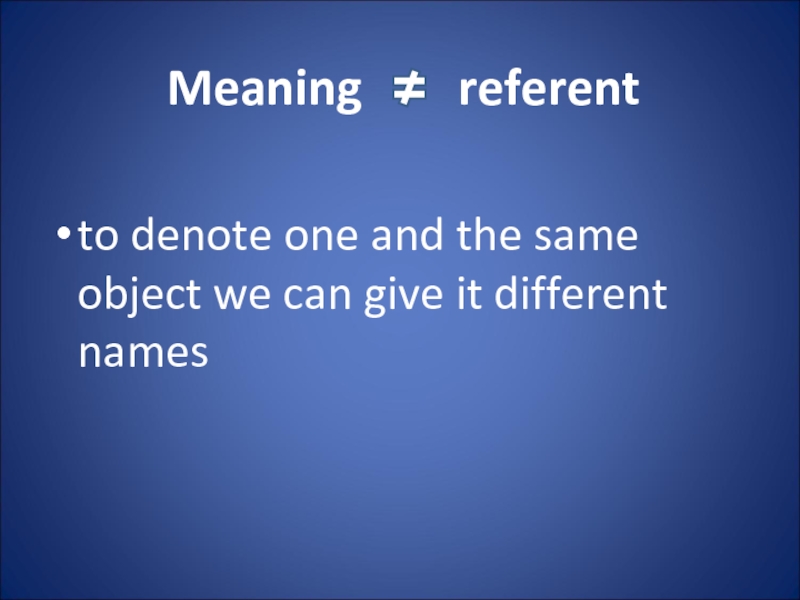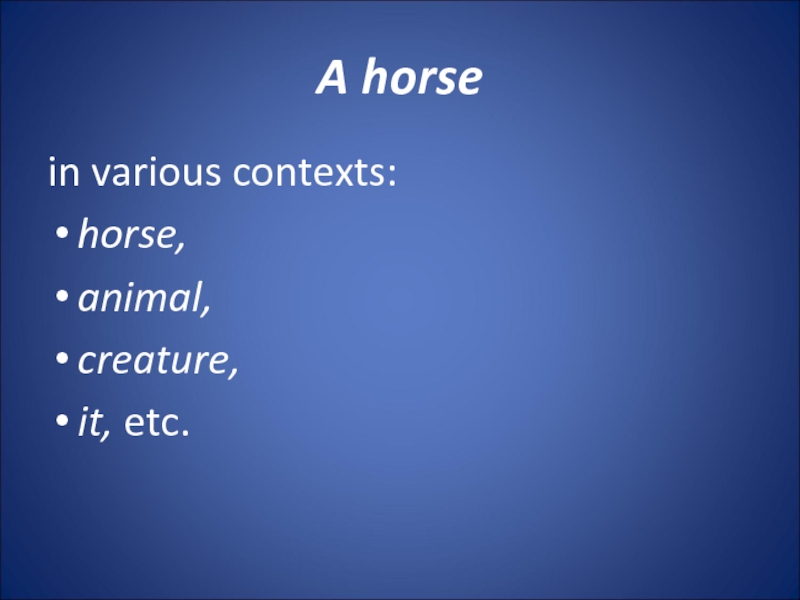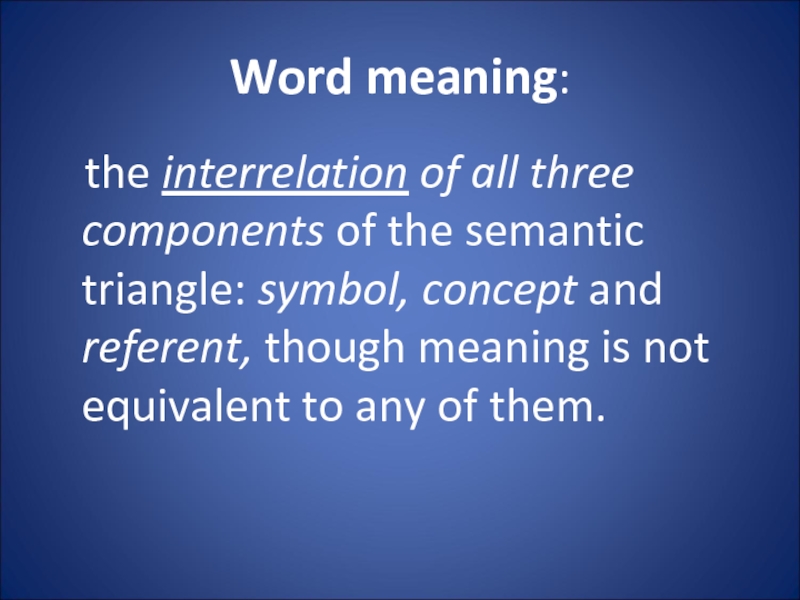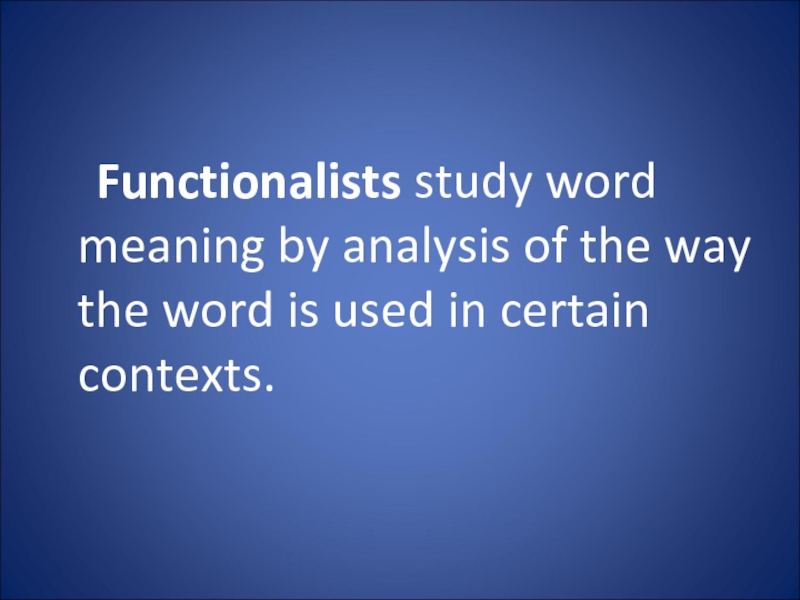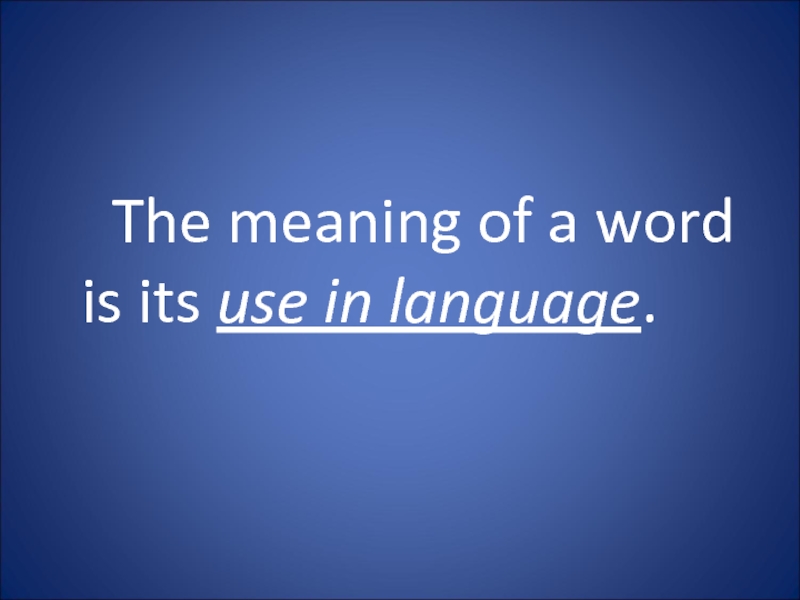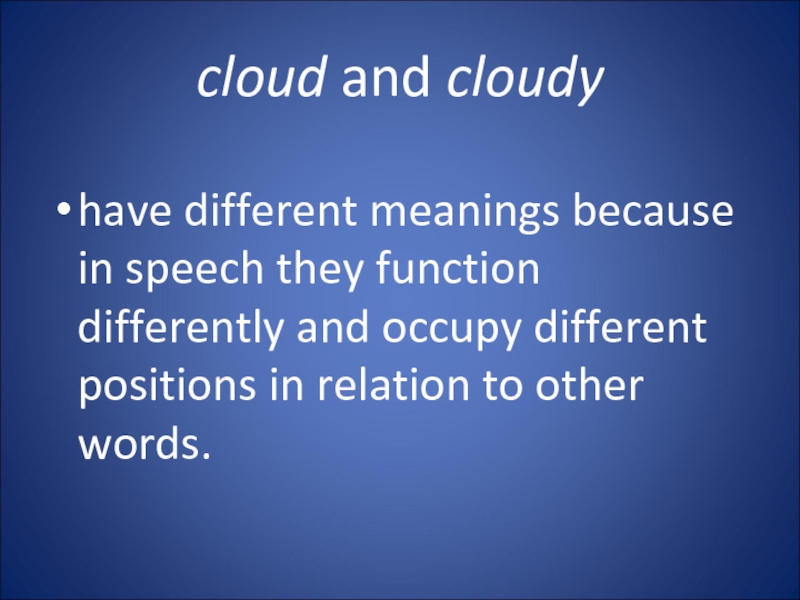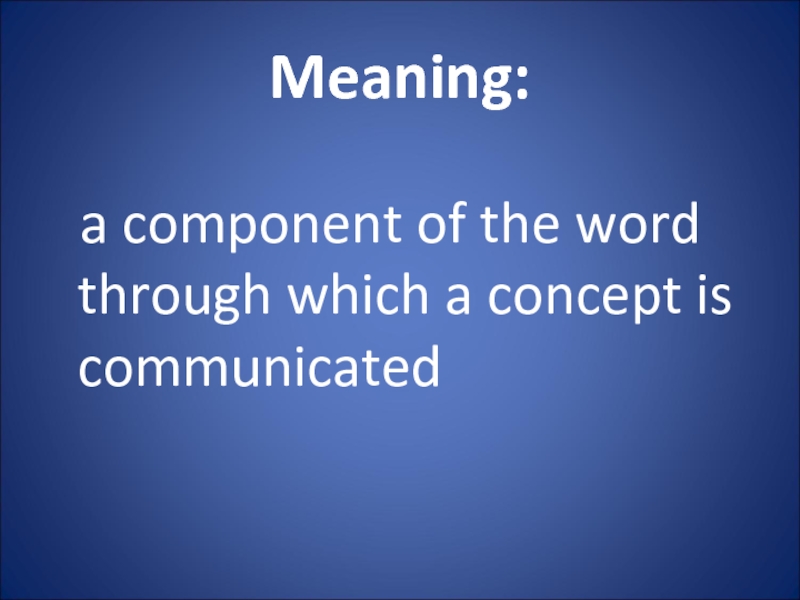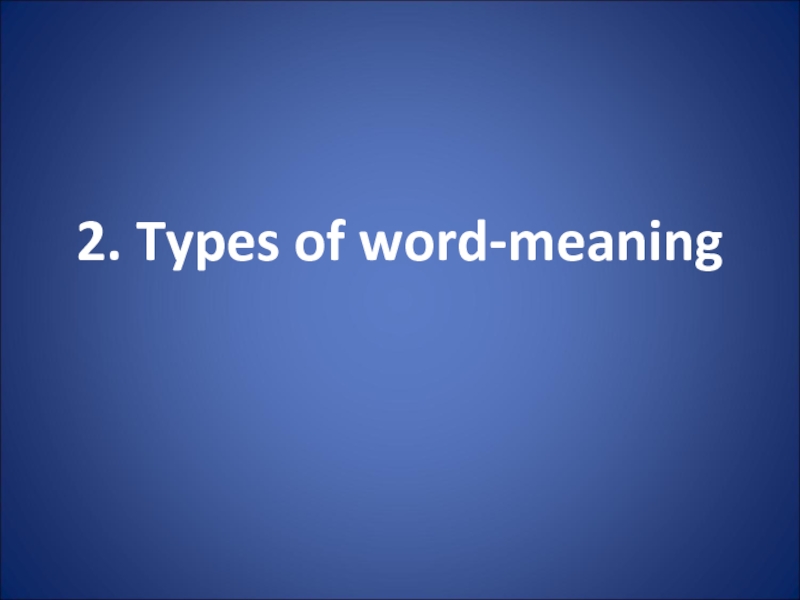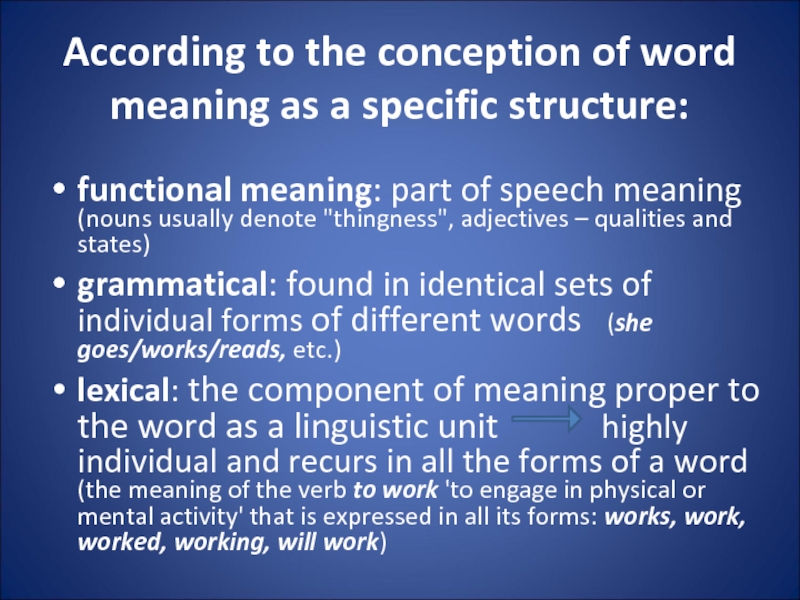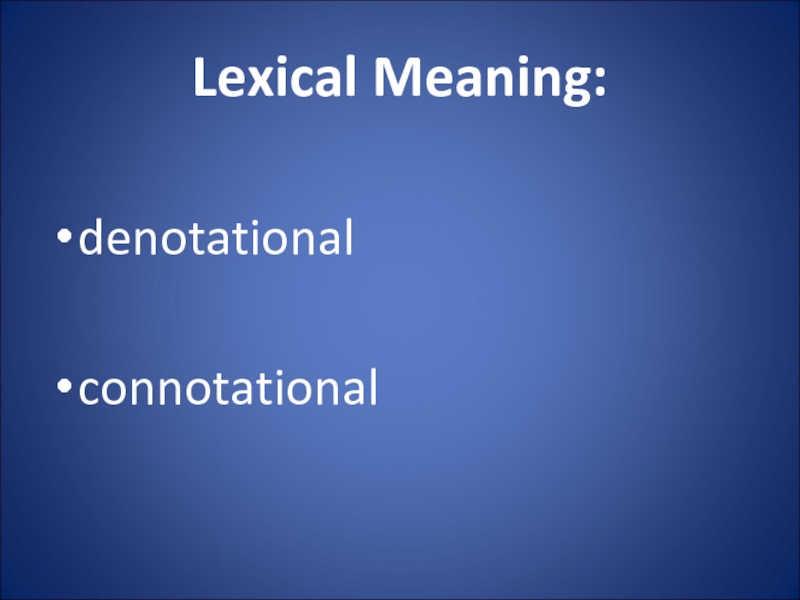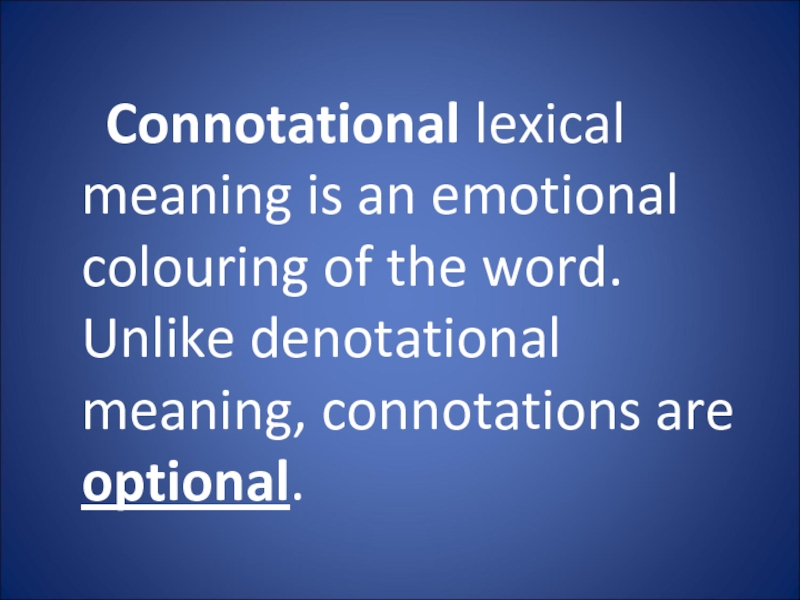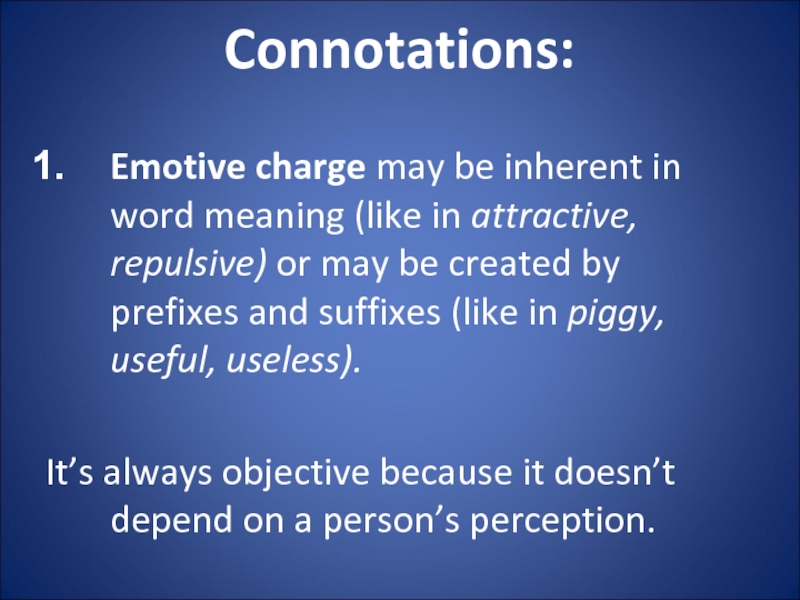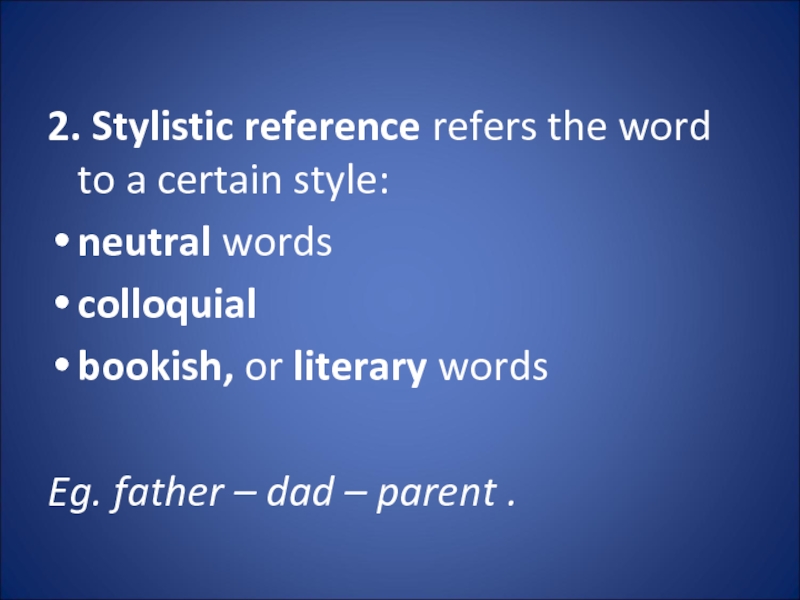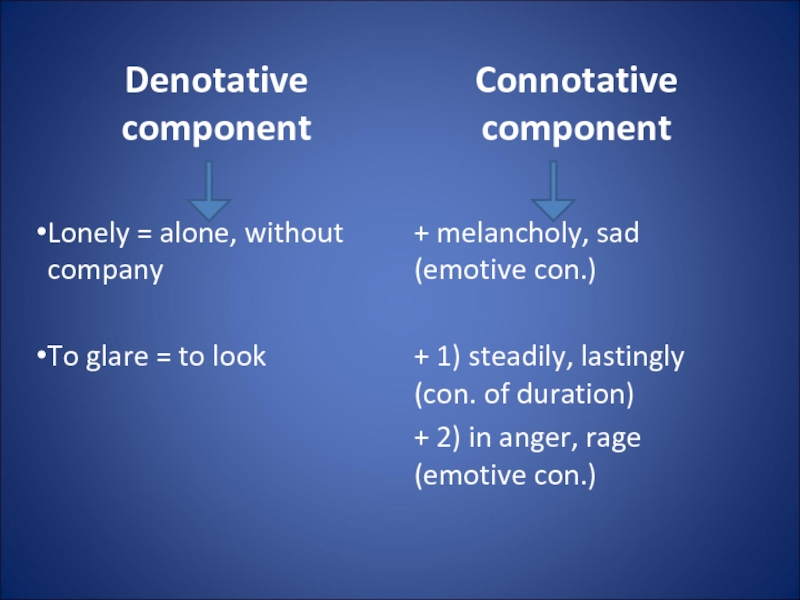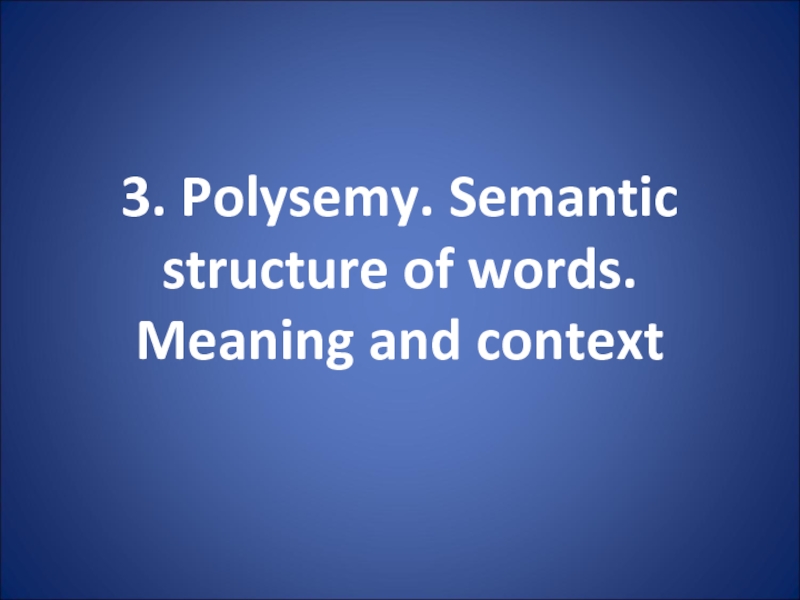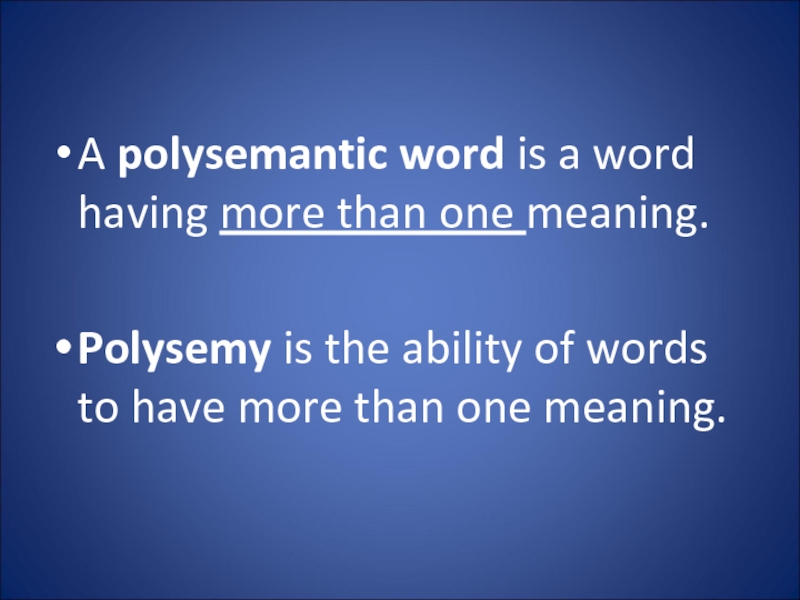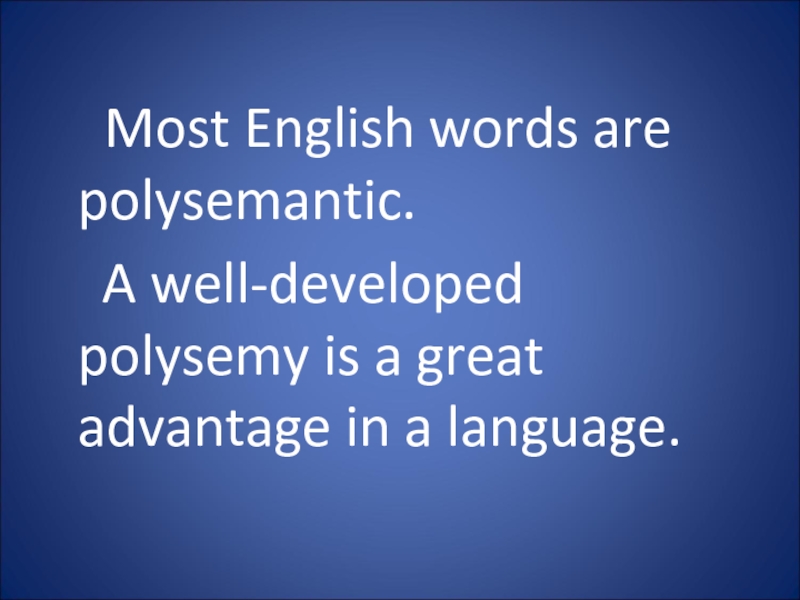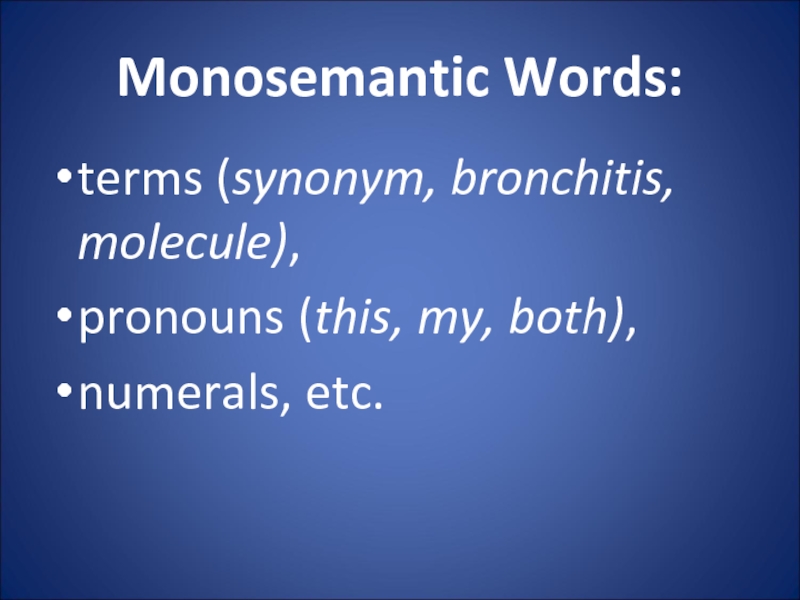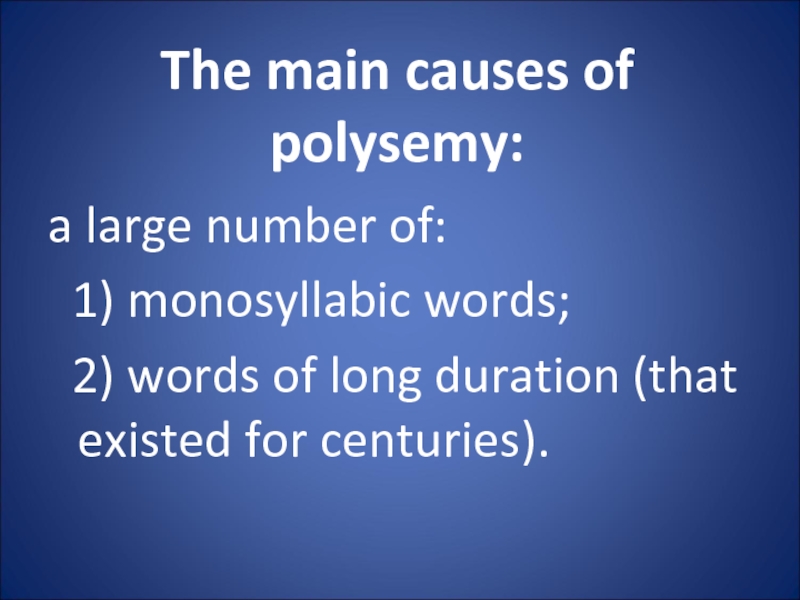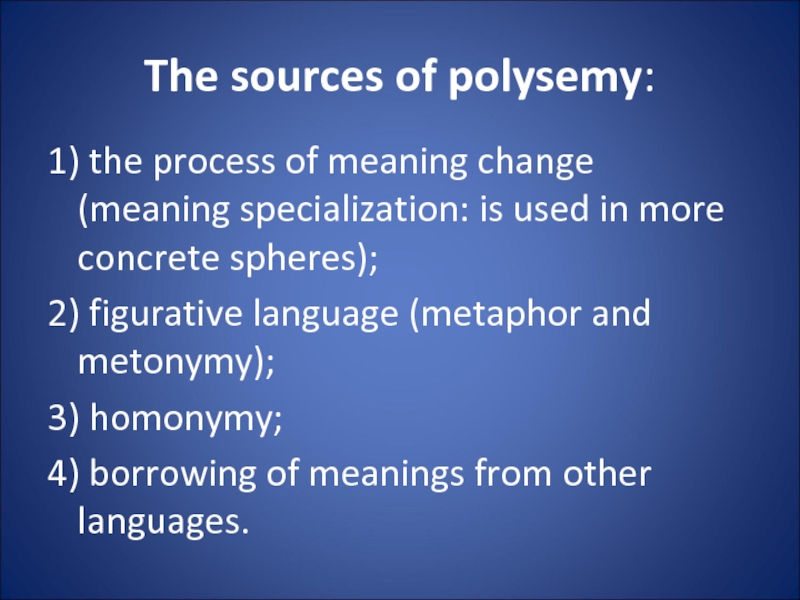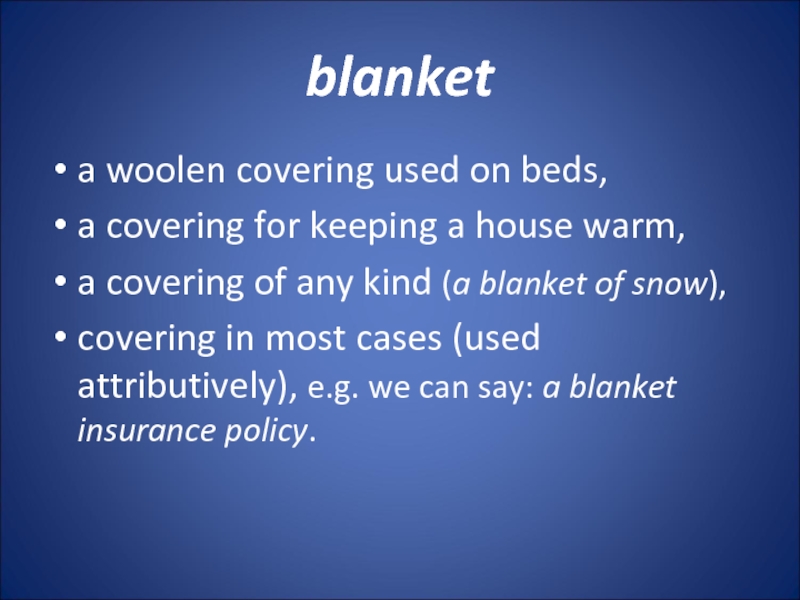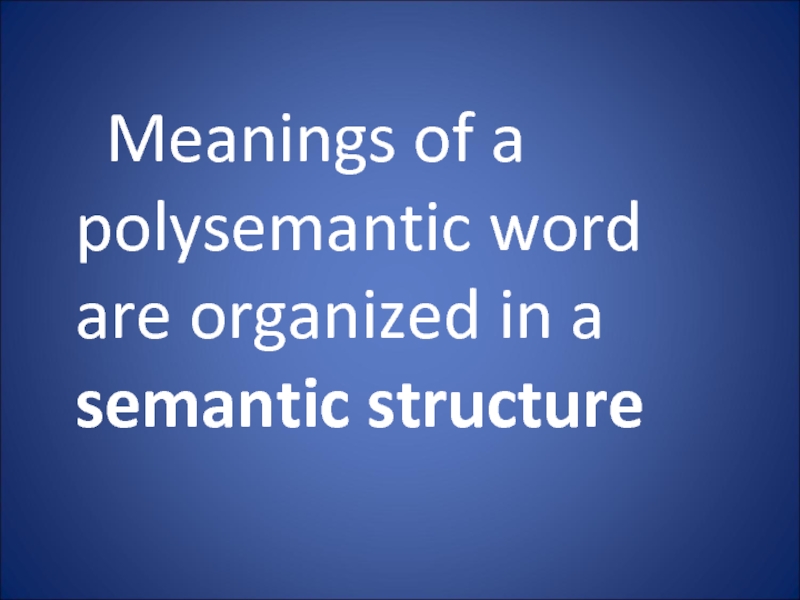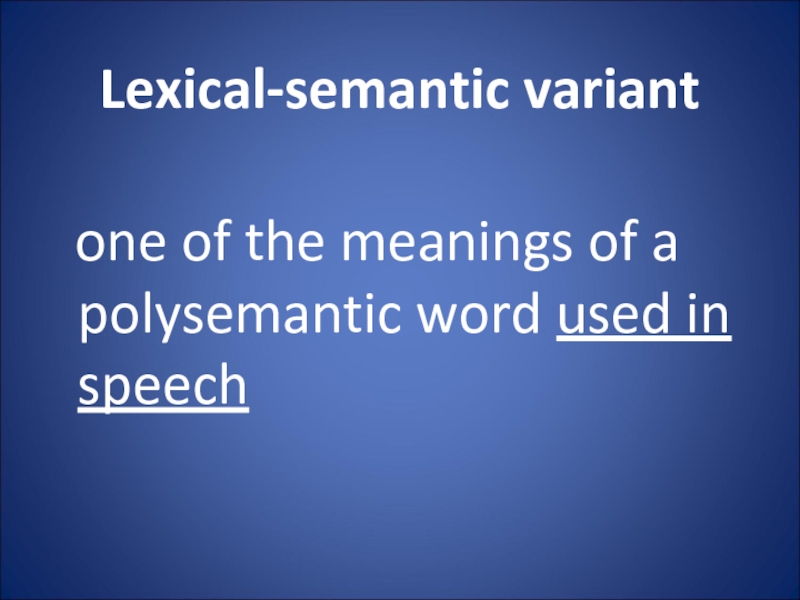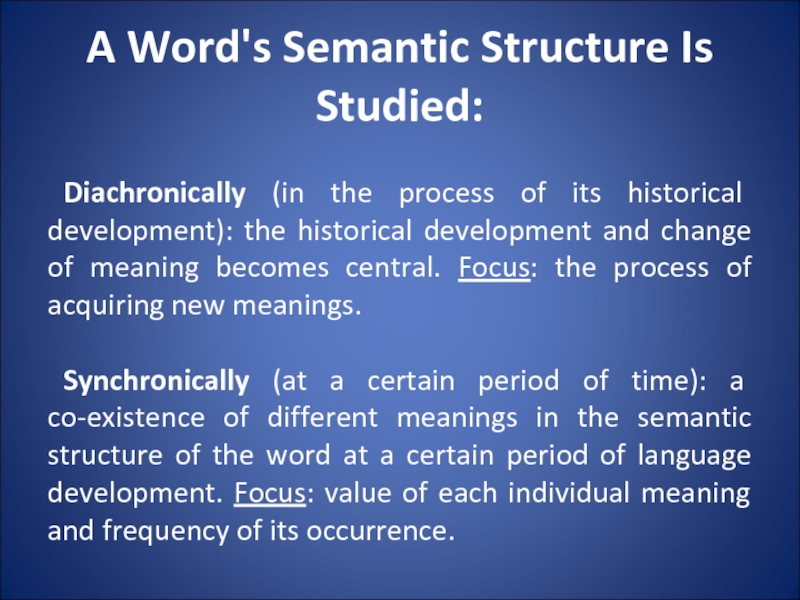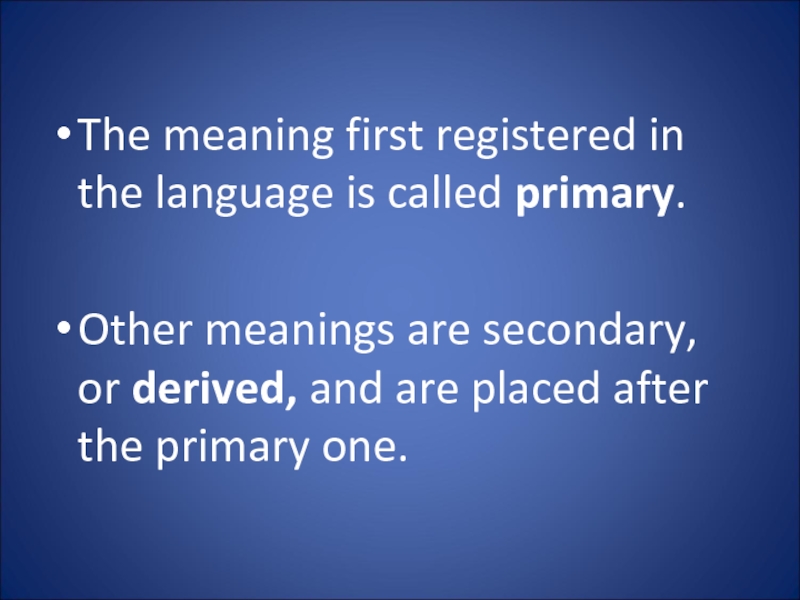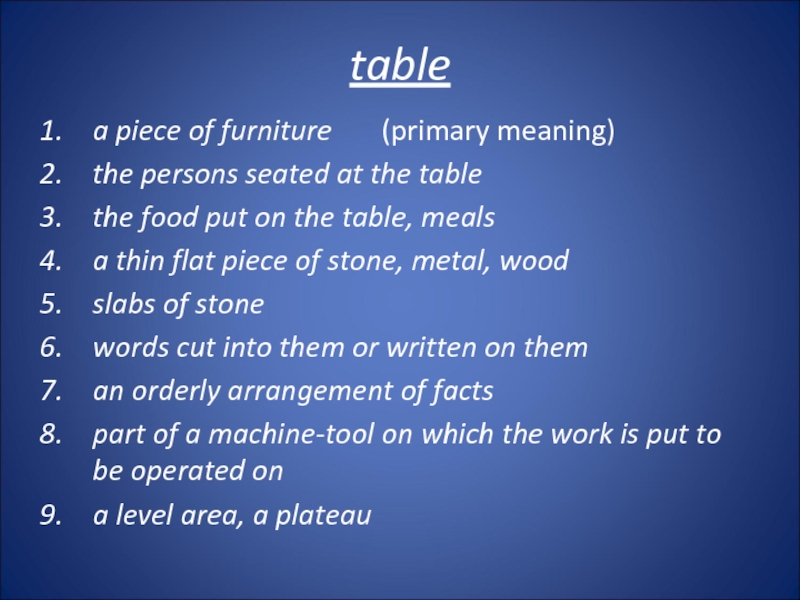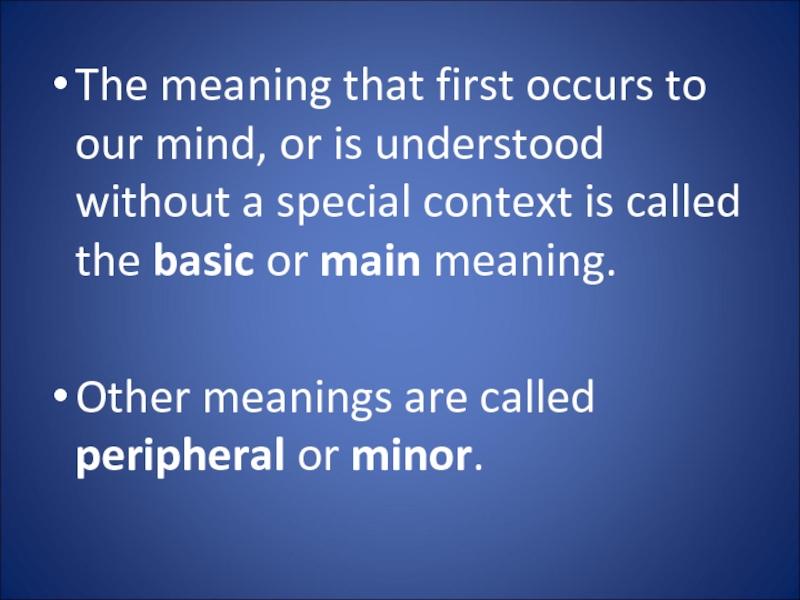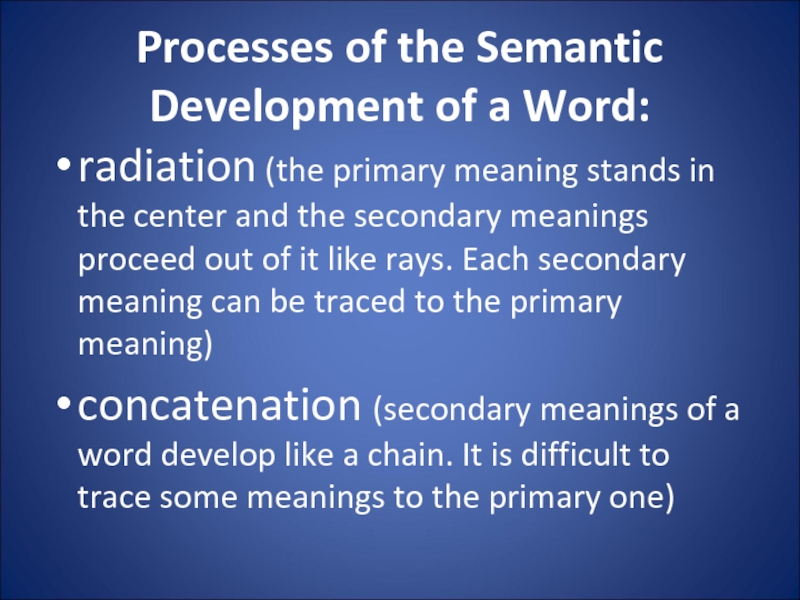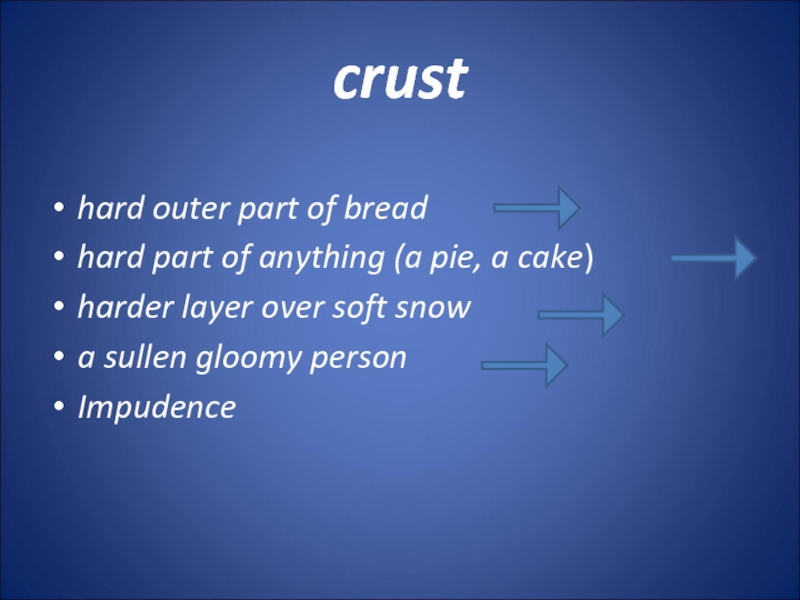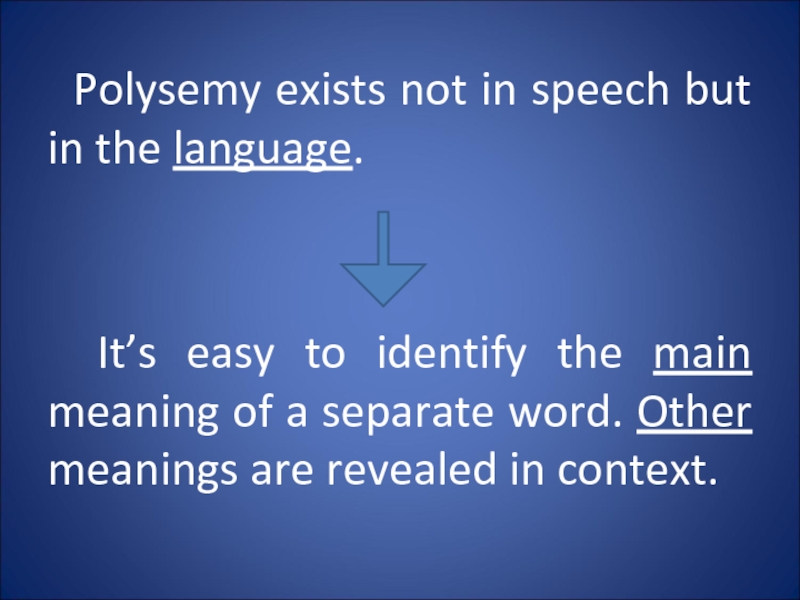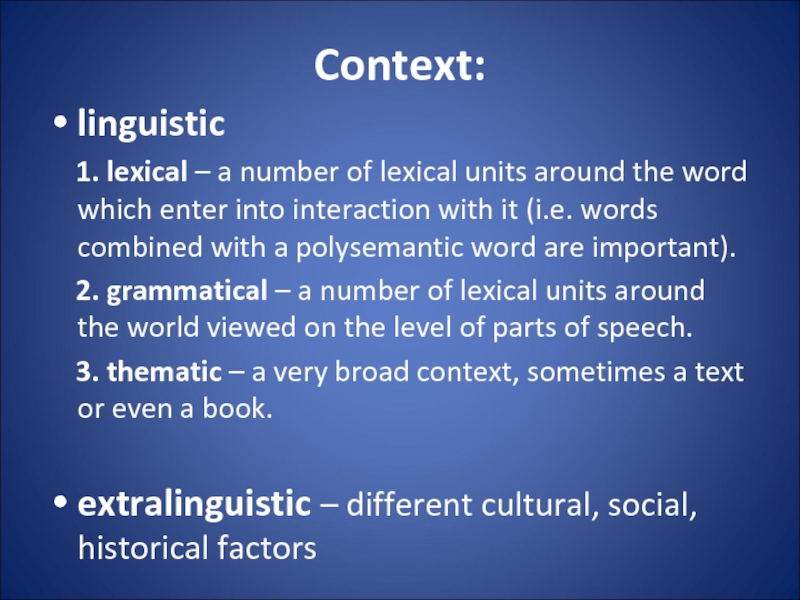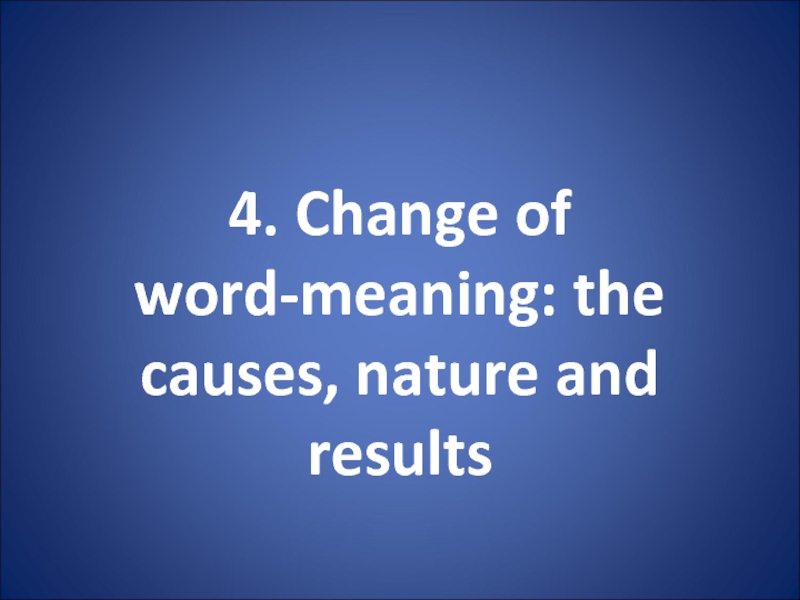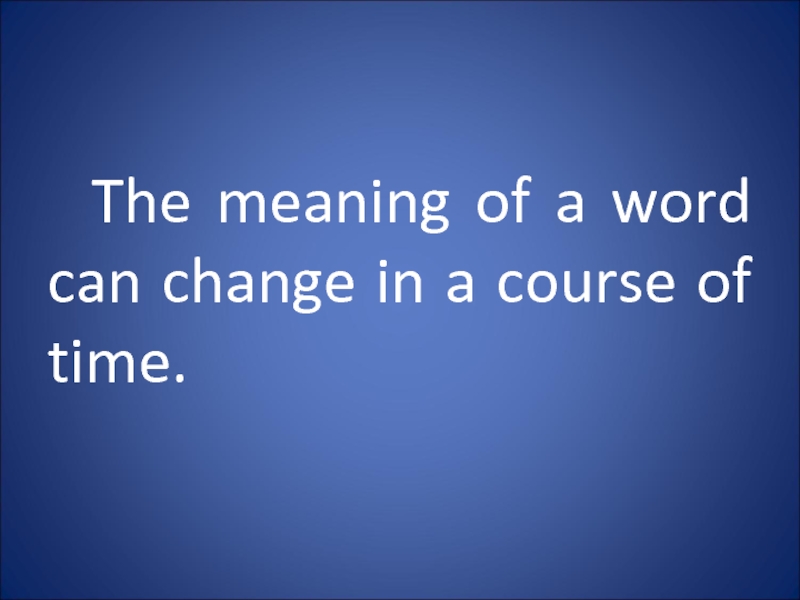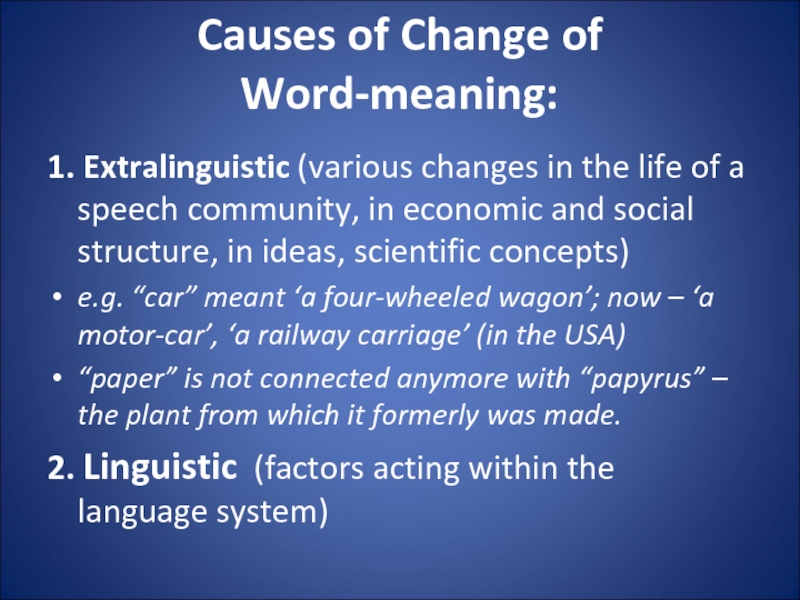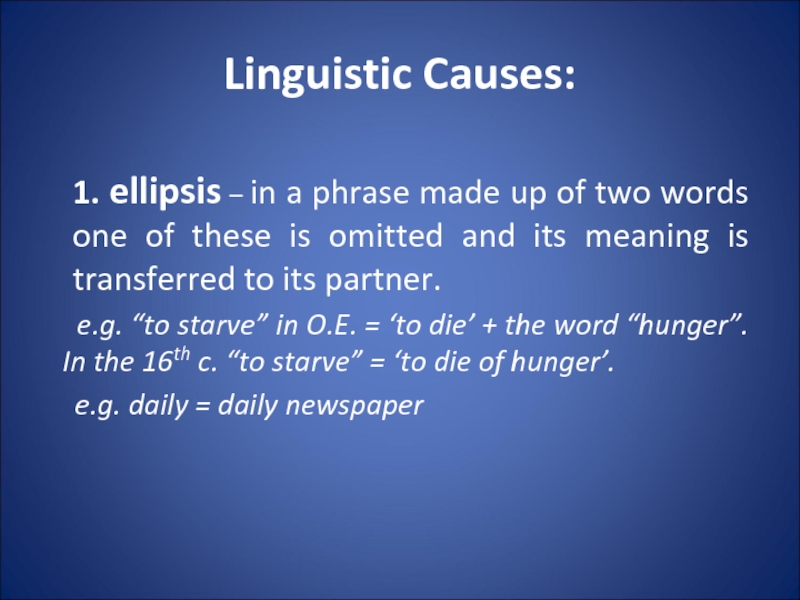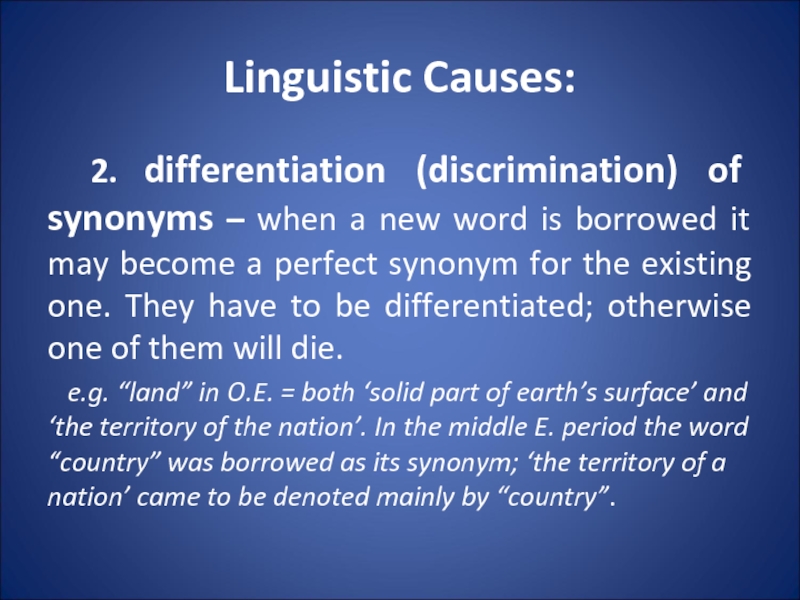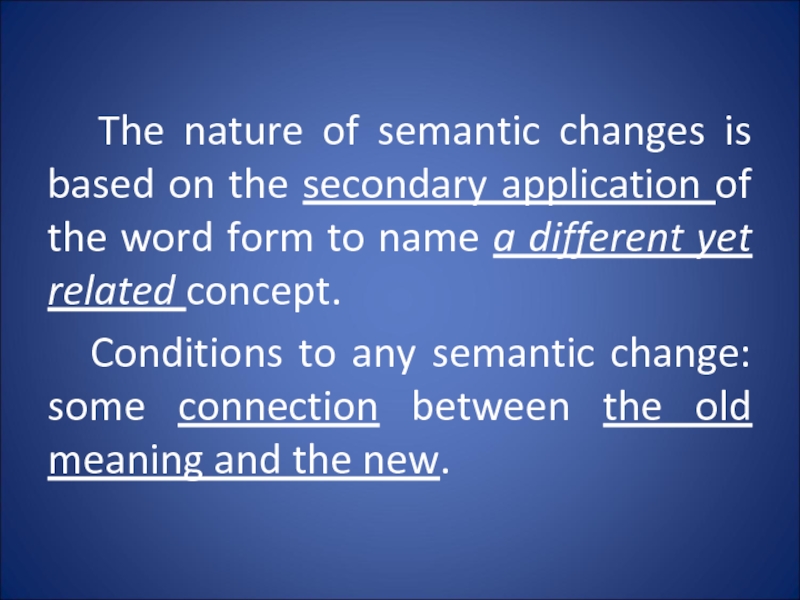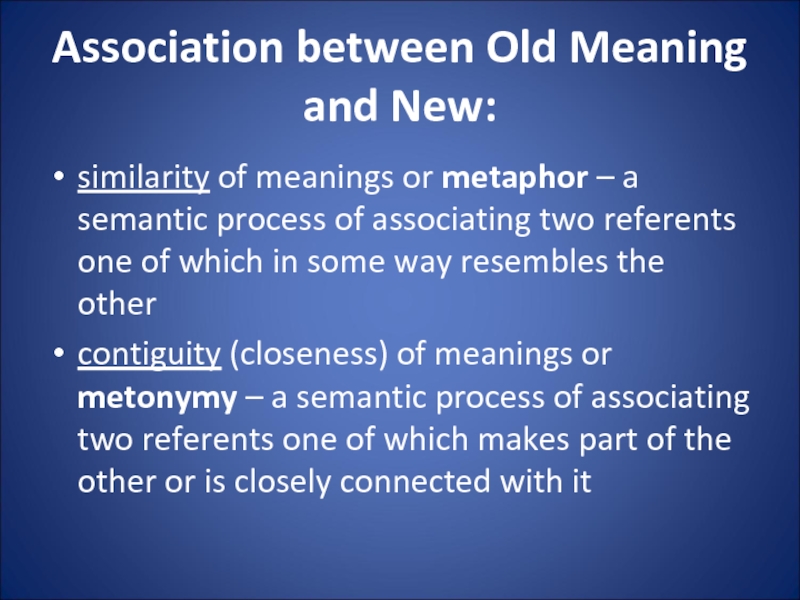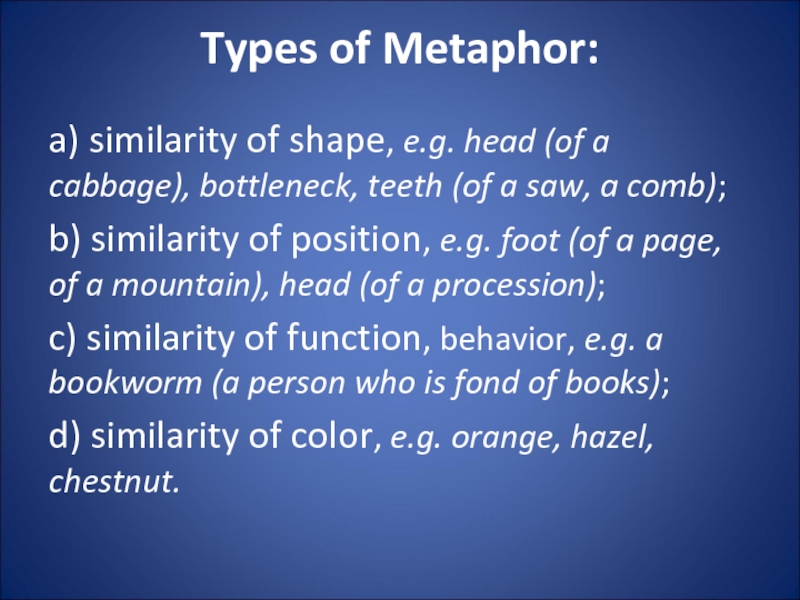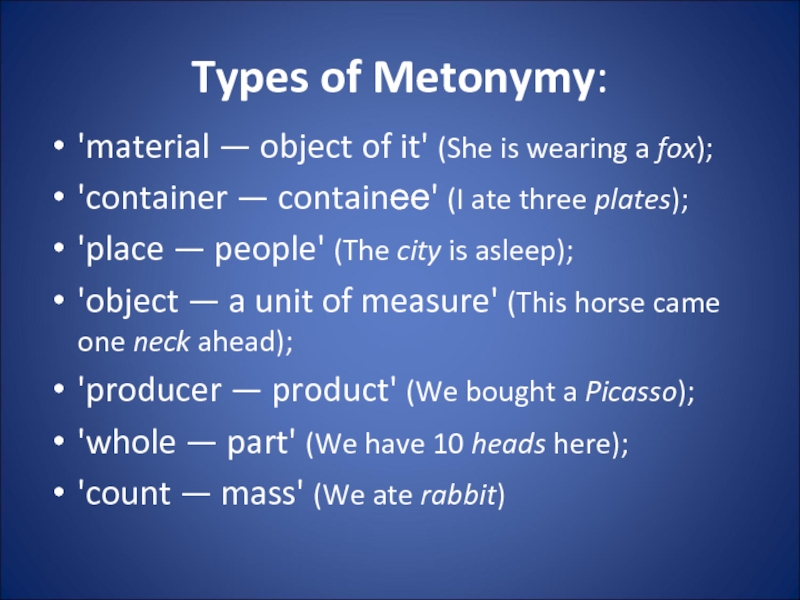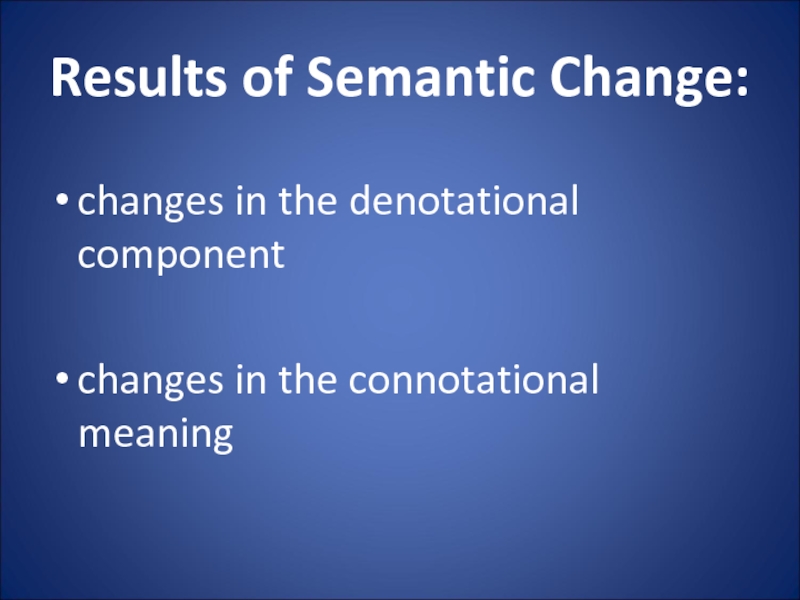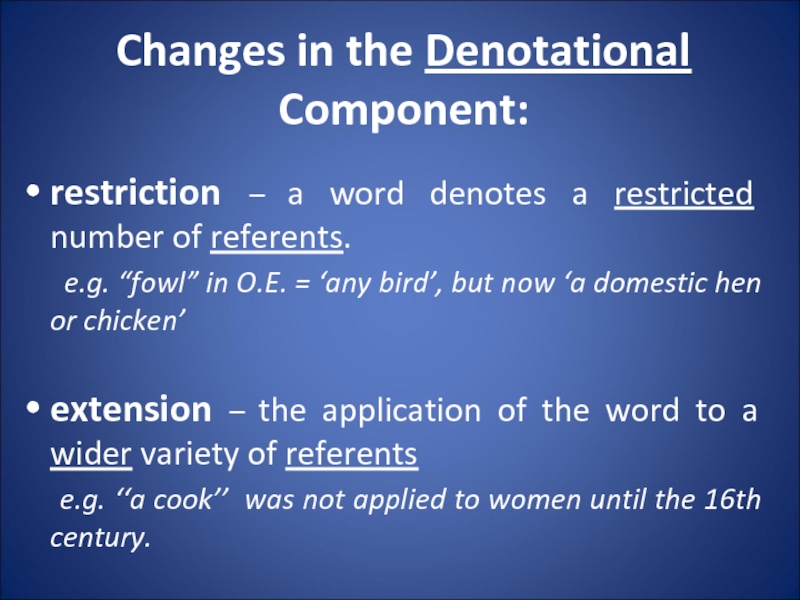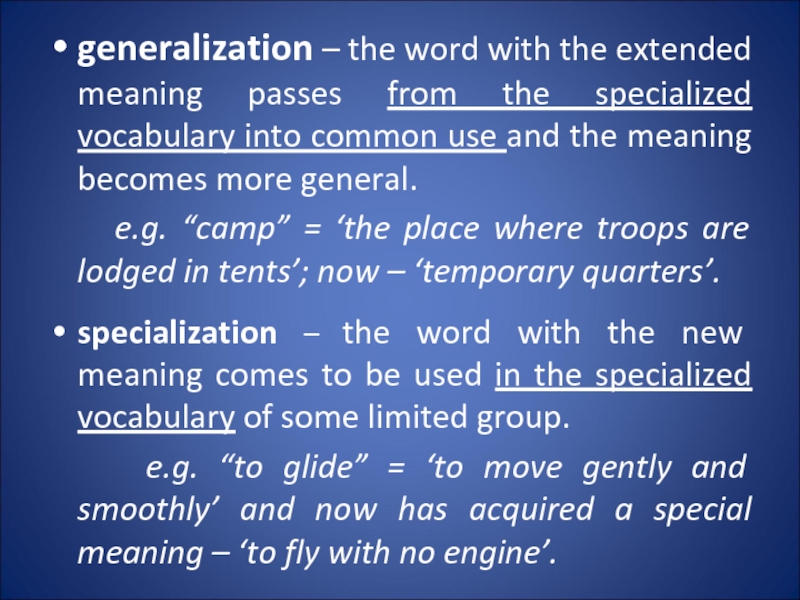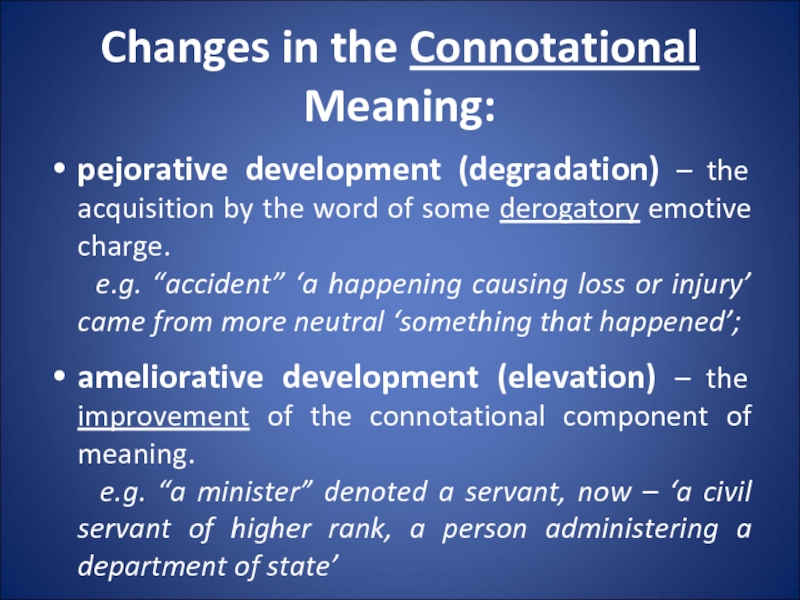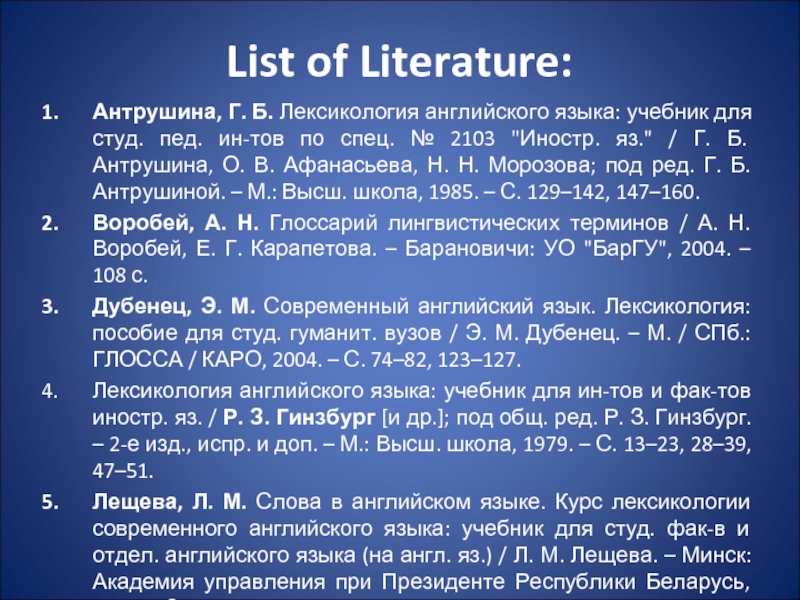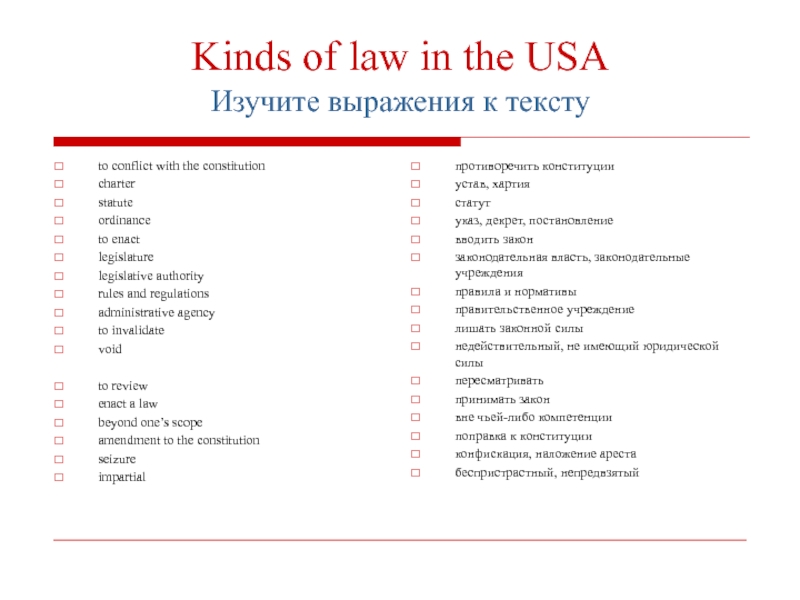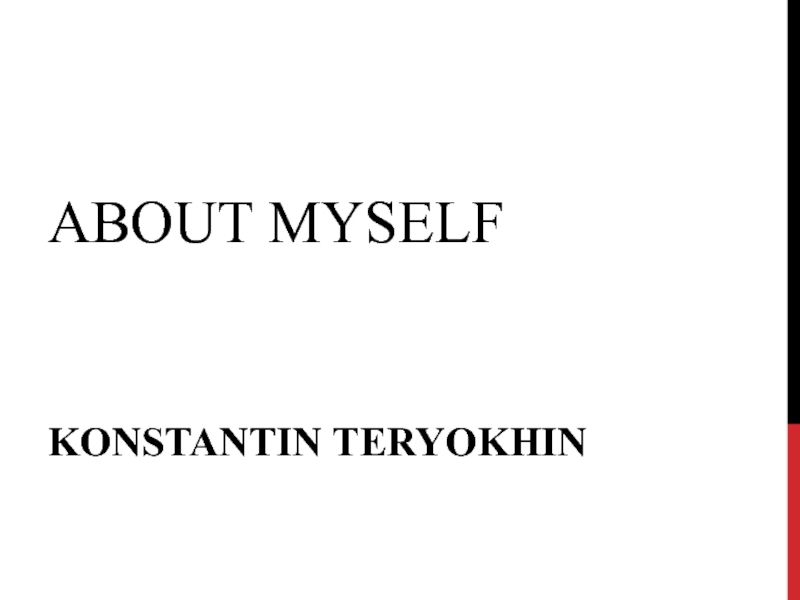- Главная
- Разное
- Дизайн
- Бизнес и предпринимательство
- Аналитика
- Образование
- Развлечения
- Красота и здоровье
- Финансы
- Государство
- Путешествия
- Спорт
- Недвижимость
- Армия
- Графика
- Культурология
- Еда и кулинария
- Лингвистика
- Английский язык
- Астрономия
- Алгебра
- Биология
- География
- Детские презентации
- Информатика
- История
- Литература
- Маркетинг
- Математика
- Медицина
- Менеджмент
- Музыка
- МХК
- Немецкий язык
- ОБЖ
- Обществознание
- Окружающий мир
- Педагогика
- Русский язык
- Технология
- Физика
- Философия
- Химия
- Шаблоны, картинки для презентаций
- Экология
- Экономика
- Юриспруденция
Semantic structure of the word and its changes. (Lecture 3) презентация
Содержание
- 1. Semantic structure of the word and its changes. (Lecture 3)
- 2. Plan: Semantics / semasiology. Different approaches to
- 3. List of Terms: semantics referent referential meaning
- 4. It is meaning that makes
- 5. 1. Semantics / semasiology. Different approaches to word-meaning
- 6. The function of the
- 7. "The Meaning of Meaning" (1923) by
- 8. Meaning of a linguistic unit, or linguistic
- 9. This linguistic study was pointed out in 1897 by M. Breal
- 10. Semasiology is a synonym
- 11. Different Approaches to Word Meaning: ideational (or conceptual) referential functional
- 12. The ideational theory can
- 13. A difficulty: not clear why communication
- 14. Meaning: a concept with specific structure.
- 15. Do people speaking different languages have
- 16. finger 'one of 10 movable parts
- 17. Referential theory is
- 18. The complex relationships
- 19. an
- 20. Meaning concept different words
- 21. Concept of dying die pass away
- 22. Meaning symbol In different
- 23. Meaning referent to denote
- 24. A horse in various contexts: horse, animal, creature, it, etc.
- 25. Word meaning: the interrelation
- 26. Functionalists study word meaning
- 27. The meaning of a word is its use in language.
- 28. cloud and cloudy have different meanings
- 29. Meaning: a component of the word through which a concept is communicated
- 30. 2. Types of word-meaning
- 31. According to the conception of word meaning
- 32. Lexical Meaning: denotational connotational
- 33. Denotational lexical meaning provides correct reference
- 34. to glare – to look
- 35. Connotational lexical meaning is
- 36. Connotations: Emotive charge may be inherent in
- 37. 2. Stylistic reference refers the word
- 38. 3. Evaluative connotations express approval or
- 39. Denotative component Lonely = alone,
- 40. 3. Polysemy. Semantic structure of words. Meaning and context
- 41. A polysemantic word is a word
- 42. Most English
- 43. Monosemantic Words: terms (synonym, bronchitis, molecule), pronouns (this, my, both), numerals, etc.
- 44. The main causes of polysemy: a large
- 45. The sources of polysemy: 1) the
- 46. blanket a woolen covering used on beds,
- 47. Meanings of a polysemantic word are organized in a semantic structure
- 48. Lexical-semantic variant one of the meanings of a polysemantic word used in speech
- 49. A Word's Semantic Structure Is Studied: Diachronically
- 50. The meaning first registered in
- 51. table a piece of furniture
- 52. The meaning that first occurs to
- 53. Fire
- 54. Processes of the Semantic Development of a
- 55. crust hard outer part of bread
- 56. Polysemy exists not in speech
- 57. Context: linguistic 1. lexical
- 58. 4. Change of word-meaning: the causes, nature and results
- 59. The meaning of a word can change in a course of time.
- 60. Causes of Change of Word-meaning:
- 61. Linguistic Causes: 1. ellipsis – in a
- 62. Linguistic Causes: 2. differentiation (discrimination) of
- 63. Linguistic Causes: 3. linguistic analogy – if
- 64. The nature of semantic
- 65. Association between Old Meaning and New: similarity
- 66. Types of Metaphor: a) similarity of
- 67. Types of Metonymy: 'material — object of
- 68. Results of Semantic Change: changes in the denotational component changes in the connotational meaning
- 69. Changes in the Denotational Component: restriction
- 70. generalization – the word with the
- 71. Changes in the Connotational Meaning: pejorative development
- 72. List of Literature: Антрушина, Г. Б. Лексикология
Слайд 2Plan:
Semantics / semasiology. Different approaches to word-meaning.
Types of word-meaning.
Polysemy. Semantic
Change of word-meaning: the causes, nature and results.
Слайд 3List of Terms:
semantics
referent
referential meaning
grammatical meaning
lexical meaning
denotational meaning
connotational meaning
polysemantic word
polysemy
lexical-semantic variants
basic meaning
peripheral
primary meaning
secondary meaning
radiation
concatenation
lexical context
grammatical context
thematic context
ellipsis
differentiation of synonyms
linguistic analogy
metaphor
metonymy
restriction of meaning
extension of meaning
ameliorative development of meaning
pejorative development of meaning
Слайд 6
The function of the word as a unit of
Among the word’s various characteristics meaning is the most important.
Слайд 7
"The Meaning of Meaning" (1923) by C.K. Ogden and I.A. Richards
Слайд 8Meaning of a linguistic unit, or linguistic meaning, is studied by
(from Greek – semanticos 'significant')
Слайд 12
The ideational theory can be considered the earliest theory
It states that meaning originates in the mind in the form of ideas, and words are just symbols of them.
Слайд 13A difficulty:
not clear why communication and understanding are possible if
Слайд 15
Do people speaking different languages have different conceptual systems?
If people
Слайд 16
finger 'one of 10 movable parts of joints at the end
and
палец 'подвижная конечная часть кисти руки, стопы ноги или лапы животного'
Слайд 18
The complex relationships between referent (object denoted by the
Thought = concept
Symbol = word Referent = object
Слайд 20Meaning concept
different words having different meanings may be
Слайд 22Meaning symbol
In different languages:
a word with the same
words with the same sound forms have different meaning (лук, look)
Слайд 25Word meaning:
the interrelation of all three components of
Слайд 26
Functionalists study word meaning by analysis of the way
Слайд 28cloud and cloudy
have different meanings because in speech they function
Слайд 31According to the conception of word meaning as a specific structure:
functional
grammatical: found in identical sets of individual forms of different words (she goes/works/reads, etc.)
lexical: the component of meaning proper to the word as a linguistic unit highly individual and recurs in all the forms of a word (the meaning of the verb to work 'to engage in physical or mental activity' that is expressed in all its forms: works, work, worked, working, will work)
Слайд 33
Denotational lexical meaning provides correct reference of a word to an
It makes communication possible and is explicitly revealed in the dictionary definition (chair 'a seat for one person typically having four legs and a back').
Слайд 35
Connotational lexical meaning is an emotional colouring of the
Слайд 36Connotations:
Emotive charge may be inherent in word meaning (like in attractive,
It’s always objective because it doesn’t depend on a person’s perception.
Слайд 37
2. Stylistic reference refers the word to a certain style:
neutral words
colloquial
bookish,
Eg. father – dad – parent .
Слайд 38
3. Evaluative connotations express approval or disapproval (charming, disgusting).
4. Intensifying connotations
Слайд 39
Denotative component
Lonely = alone, without company
To glare = to look
Connotative component
+ melancholy, sad (emotive con.)
+ 1) steadily, lastingly (con. of duration)
+ 2) in anger, rage (emotive con.)
Слайд 41
A polysemantic word is a word having more than one meaning.
Polysemy
Слайд 42
Most English words are polysemantic.
Слайд 43Monosemantic Words:
terms (synonym, bronchitis, molecule),
pronouns (this, my, both),
numerals, etc.
Слайд 44The main causes of polysemy:
a large number of:
1) monosyllabic words;
Слайд 45The sources of polysemy:
1) the process of meaning change (meaning specialization:
2) figurative language (metaphor and metonymy);
3) homonymy;
4) borrowing of meanings from other languages.
Слайд 46blanket
a woolen covering used on beds,
a covering for keeping a house
a covering of any kind (a blanket of snow),
covering in most cases (used attributively), e.g. we can say: a blanket insurance policy.
Слайд 49A Word's Semantic Structure Is Studied:
Diachronically (in the process of its
Synchronically (at a certain period of time): a co-existence of different meanings in the semantic structure of the word at a certain period of language development. Focus: value of each individual meaning and frequency of its occurrence.
Слайд 50
The meaning first registered in the language is called primary.
Other
Слайд 51table
a piece of furniture (primary meaning)
the persons
the food put on the table, meals
a thin flat piece of stone, metal, wood
slabs of stone
words cut into them or written on them
an orderly arrangement of facts
part of a machine-tool on which the work is put to be operated on
a level area, a plateau
Слайд 52
The meaning that first occurs to our mind, or is understood
Other meanings are called peripheral or minor.
Слайд 53Fire
2. an instance of destructive burning
e.g. a forest fire
4. the shooting of guns
e.g. to open fire
3. burning material in a stone, fireplace
e.g. a camp fire
5. strong feeling, passion
e.g. speech lacking fire
Слайд 54Processes of the Semantic Development of a Word:
radiation (the primary meaning
concatenation (secondary meanings of a word develop like a chain. It is difficult to trace some meanings to the primary one)
Слайд 55crust
hard outer part of bread
hard part of anything (a
harder layer over soft snow
a sullen gloomy person
Impudence
Слайд 56
Polysemy exists not in speech but in the language.
It’s
Слайд 57Context:
linguistic
1. lexical – a number of lexical units
2. grammatical – a number of lexical units around the world viewed on the level of parts of speech.
3. thematic – a very broad context, sometimes a text or even a book.
extralinguistic – different cultural, social, historical factors
Слайд 60Causes of Change of
Word-meaning:
1. Extralinguistic (various changes in the life
e.g. “car” meant ‘a four-wheeled wagon’; now – ‘a motor-car’, ‘a railway carriage’ (in the USA)
“paper” is not connected anymore with “papyrus” – the plant from which it formerly was made.
2. Linguistic (factors acting within the language system)
Слайд 61Linguistic Causes:
1. ellipsis – in a phrase made up of two
e.g. “to starve” in O.E. = ‘to die’ + the word “hunger”. In the 16th c. “to starve” = ‘to die of hunger’.
e.g. daily = daily newspaper
Слайд 62Linguistic Causes:
2. differentiation (discrimination) of synonyms – when a new
e.g. “land” in O.E. = both ‘solid part of earth’s surface’ and ‘the territory of the nation’. In the middle E. period the word “country” was borrowed as its synonym; ‘the territory of a nation’ came to be denoted mainly by “country”.
Слайд 63Linguistic Causes:
3. linguistic analogy – if one of the members of
e.g. “to catch” acquired the meaning ‘to understand’; its synonyms “to grasp” and “to get” acquired this meaning too.
Слайд 64
The nature of semantic changes is based on the
Conditions to any semantic change: some connection between the old meaning and the new.
Слайд 65Association between Old Meaning and New:
similarity of meanings or metaphor –
contiguity (closeness) of meanings or metonymy – a semantic process of associating two referents one of which makes part of the other or is closely connected with it
Слайд 66Types of Metaphor:
a) similarity of shape, e.g. head (of a cabbage),
b) similarity of position, e.g. foot (of a page, of a mountain), head (of a procession);
c) similarity of function, behavior, e.g. a bookworm (a person who is fond of books);
d) similarity of color, e.g. orange, hazel, chestnut.
Слайд 67Types of Metonymy:
'material — object of it' (She is wearing a
'container — containее' (I ate three plates);
'place — people' (The city is asleep);
'object — a unit of measure' (This horse came one neck ahead);
'producer — product' (We bought a Picasso);
'whole — part' (We have 10 heads here);
'count — mass' (We ate rabbit)
Слайд 68Results of Semantic Change:
changes in the denotational component
changes in the connotational
Слайд 69Changes in the Denotational Component:
restriction – a word denotes a restricted
e.g. “fowl” in O.E. = ‘any bird’, but now ‘a domestic hen or chicken’
extension – the application of the word to a wider variety of referents
e.g. ‘‘a cook’’ was not applied to women until the 16th century.
Слайд 70
generalization – the word with the extended meaning passes from the
e.g. “camp” = ‘the place where troops are lodged in tents’; now – ‘temporary quarters’.
specialization – the word with the new meaning comes to be used in the specialized vocabulary of some limited group.
e.g. “to glide” = ‘to move gently and smoothly’ and now has acquired a special meaning – ‘to fly with no engine’.
Слайд 71Changes in the Connotational Meaning:
pejorative development (degradation) – the acquisition by
e.g. “accident” ‘a happening causing loss or injury’ came from more neutral ‘something that happened’;
ameliorative development (elevation) – the improvement of the connotational component of meaning.
e.g. “a minister” denoted a servant, now – ‘a civil servant of higher rank, a person administering a department of state’
Слайд 72List of Literature:
Антрушина, Г. Б. Лексикология английского языка: учебник для студ.
Воробей, А. Н. Глоссарий лингвистических терминов / А. Н. Воробей, Е. Г. Карапетова. – Барановичи: УО "БарГУ", 2004. – 108 с.
Дубенец, Э. М. Современный английский язык. Лексикология: пособие для студ. гуманит. вузов / Э. М. Дубенец. – М. / СПб.: ГЛОССА / КАРО, 2004. – С. 74–82, 123–127.
Лексикология английского языка: учебник для ин-тов и фак-тов иностр. яз. / Р. З. Гинзбург [и др.]; под общ. ред. Р. З. Гинзбург. – 2-е изд., испр. и доп. – М.: Высш. школа, 1979. – С. 13–23, 28–39, 47–51.
Лещева, Л. М. Слова в английском языке. Курс лексикологии современного английского языка: учебник для студ. фак-в и отдел. английского языка (на англ. яз.) / Л. М. Лещева. – Минск: Академия управления при Президенте Республики Беларусь, 2001. – С. 36–56.
